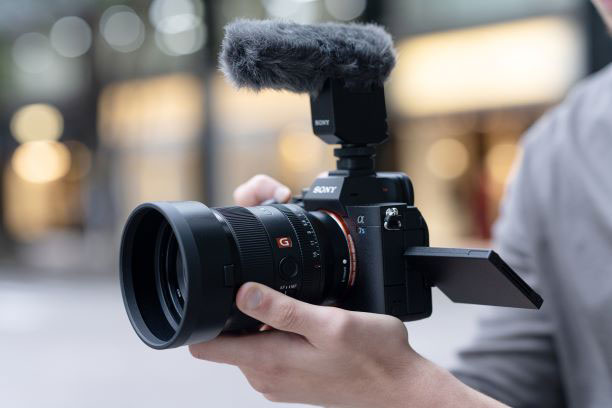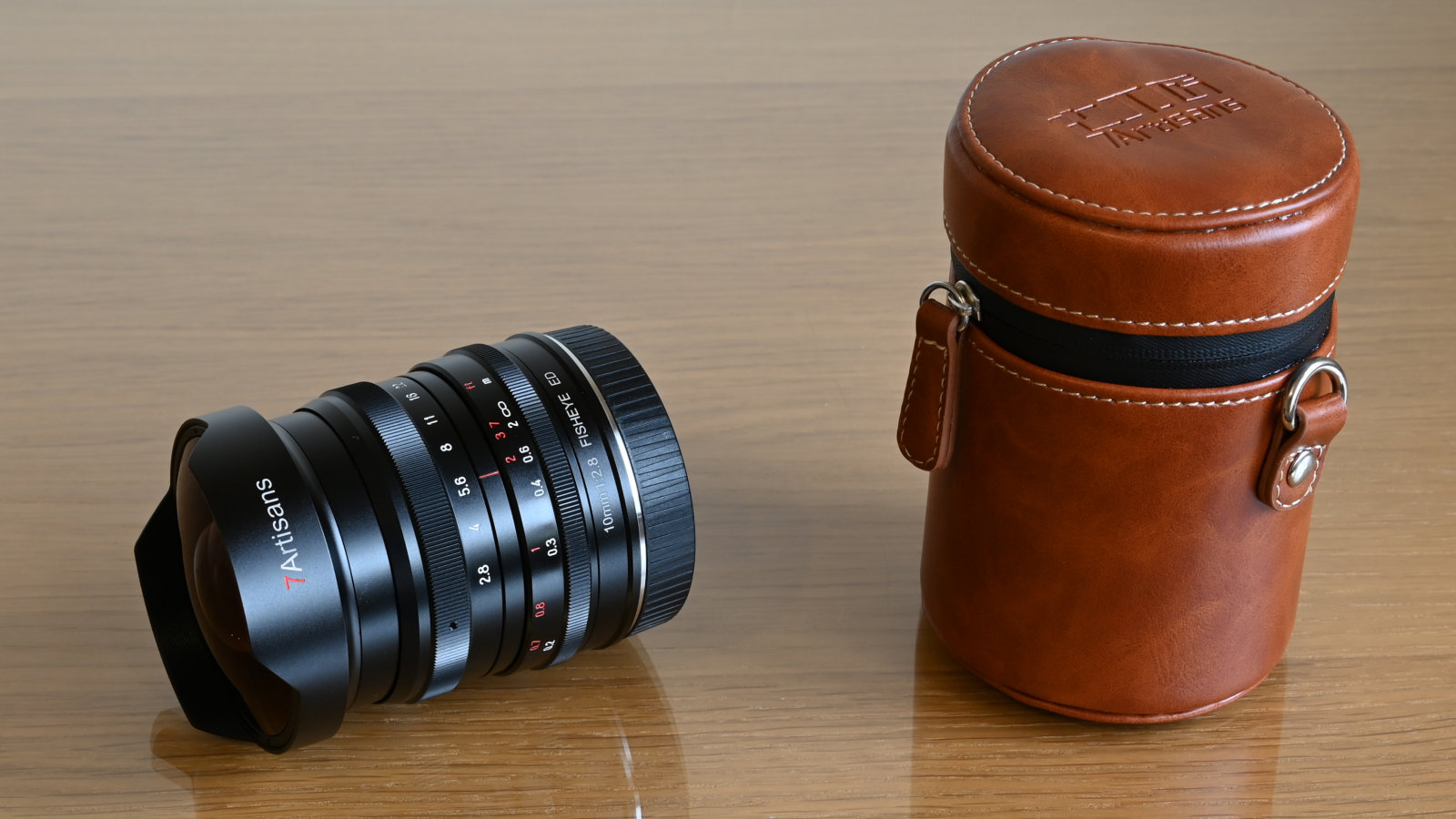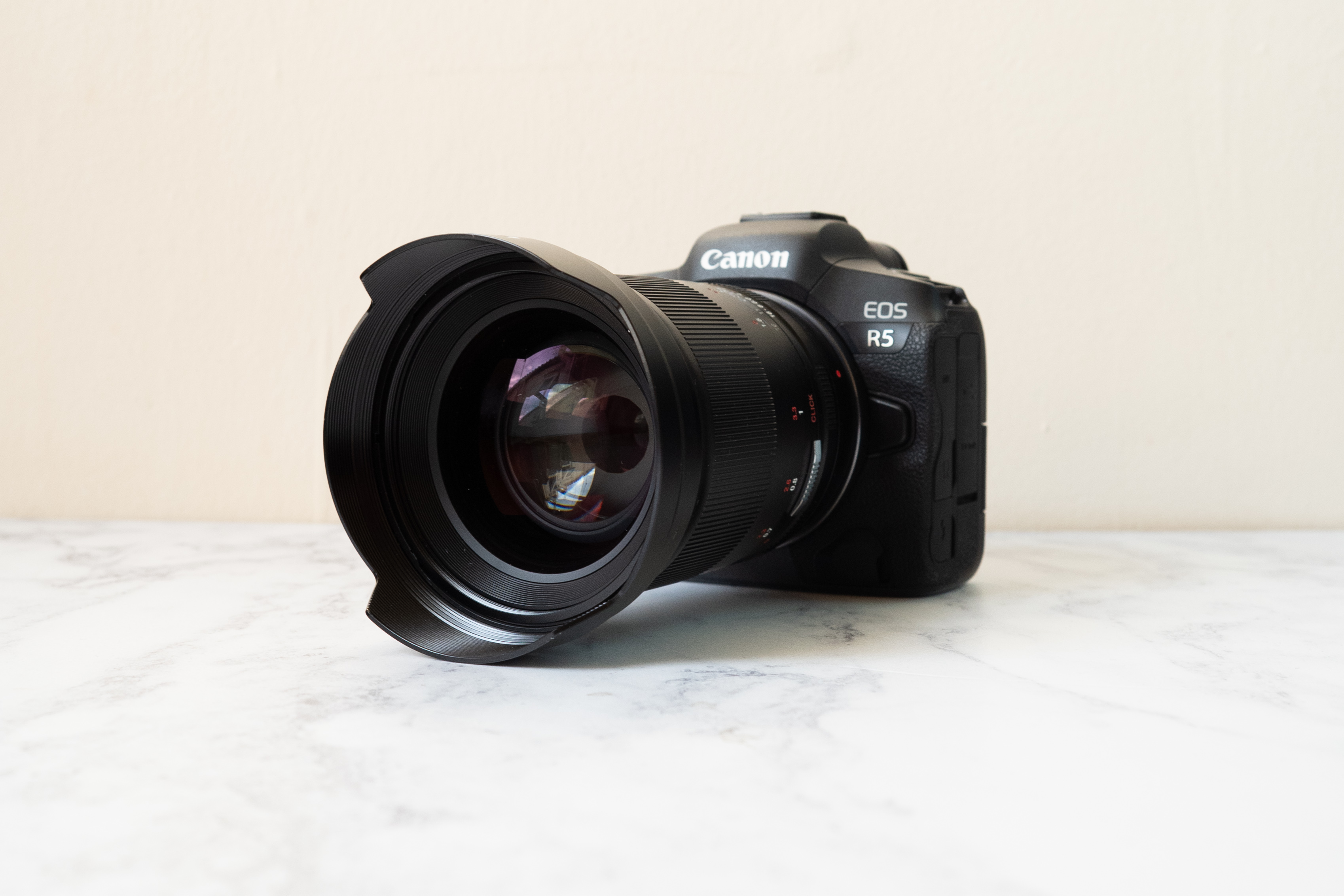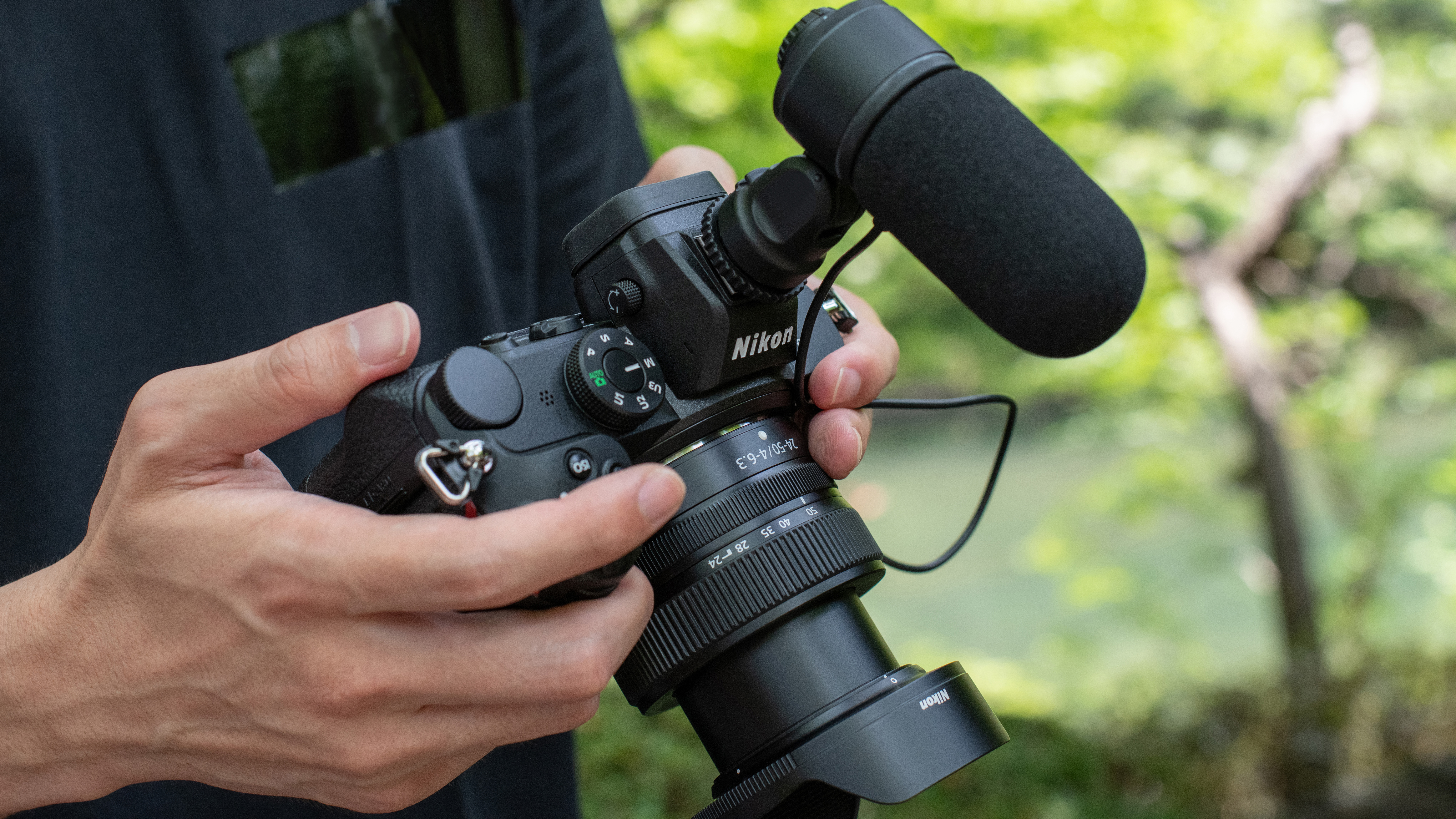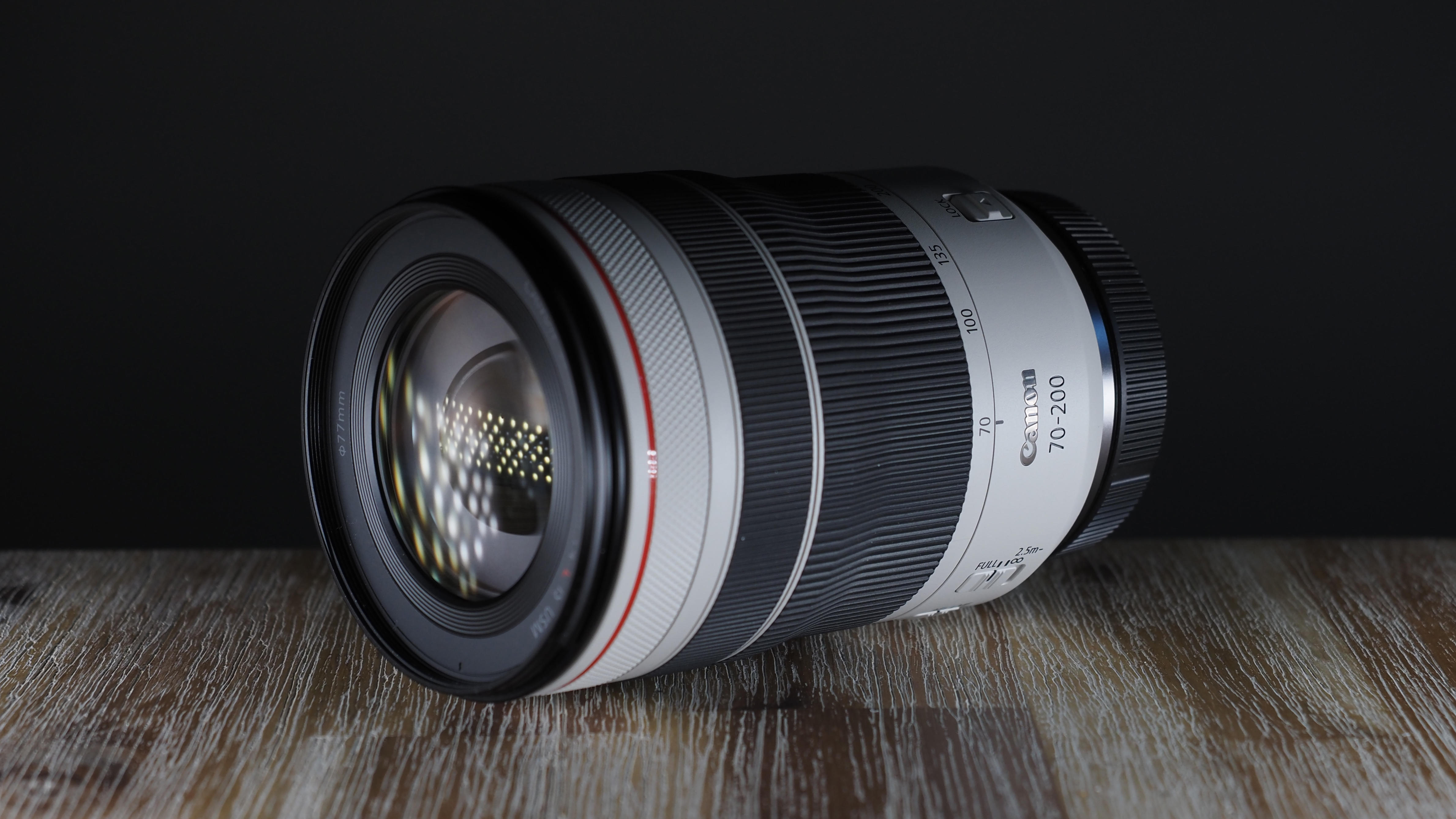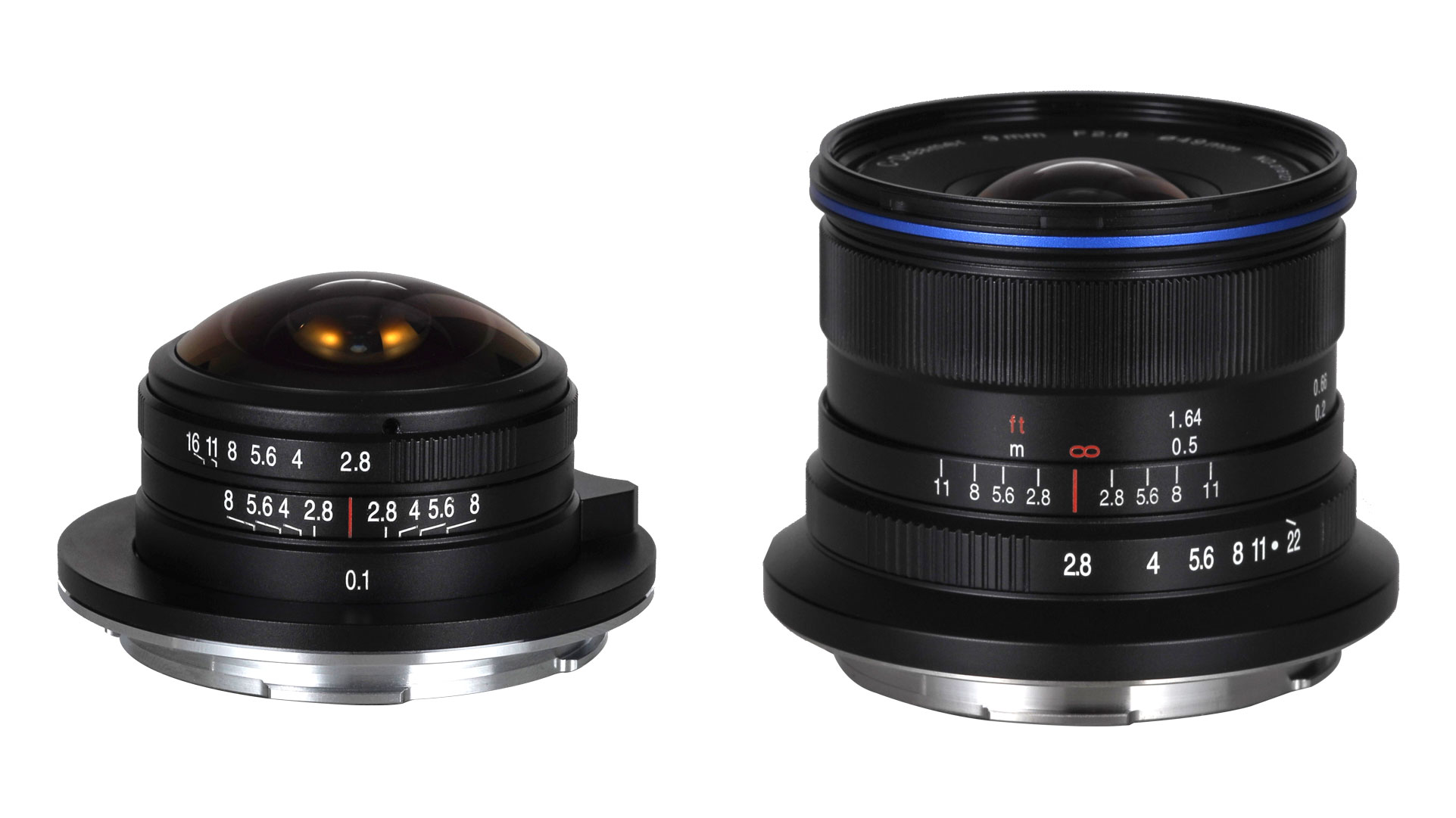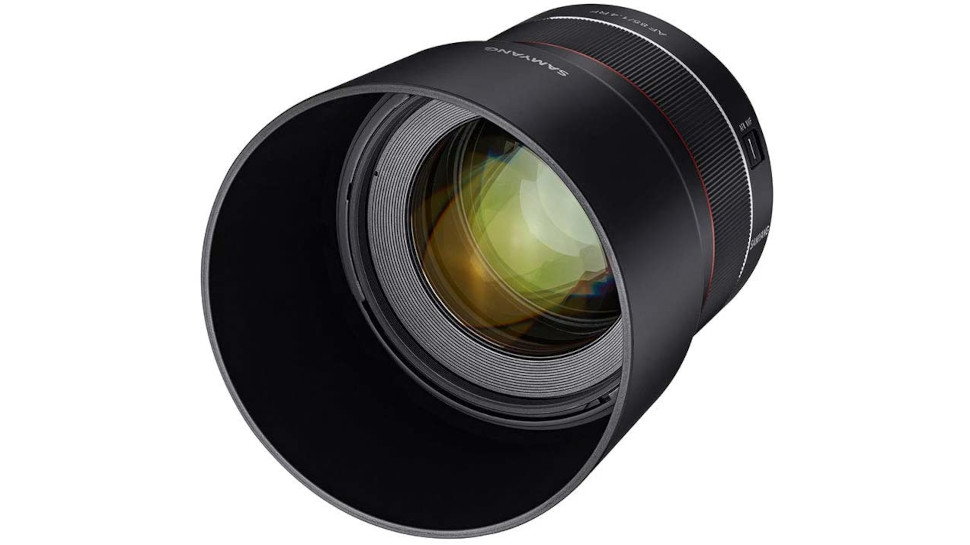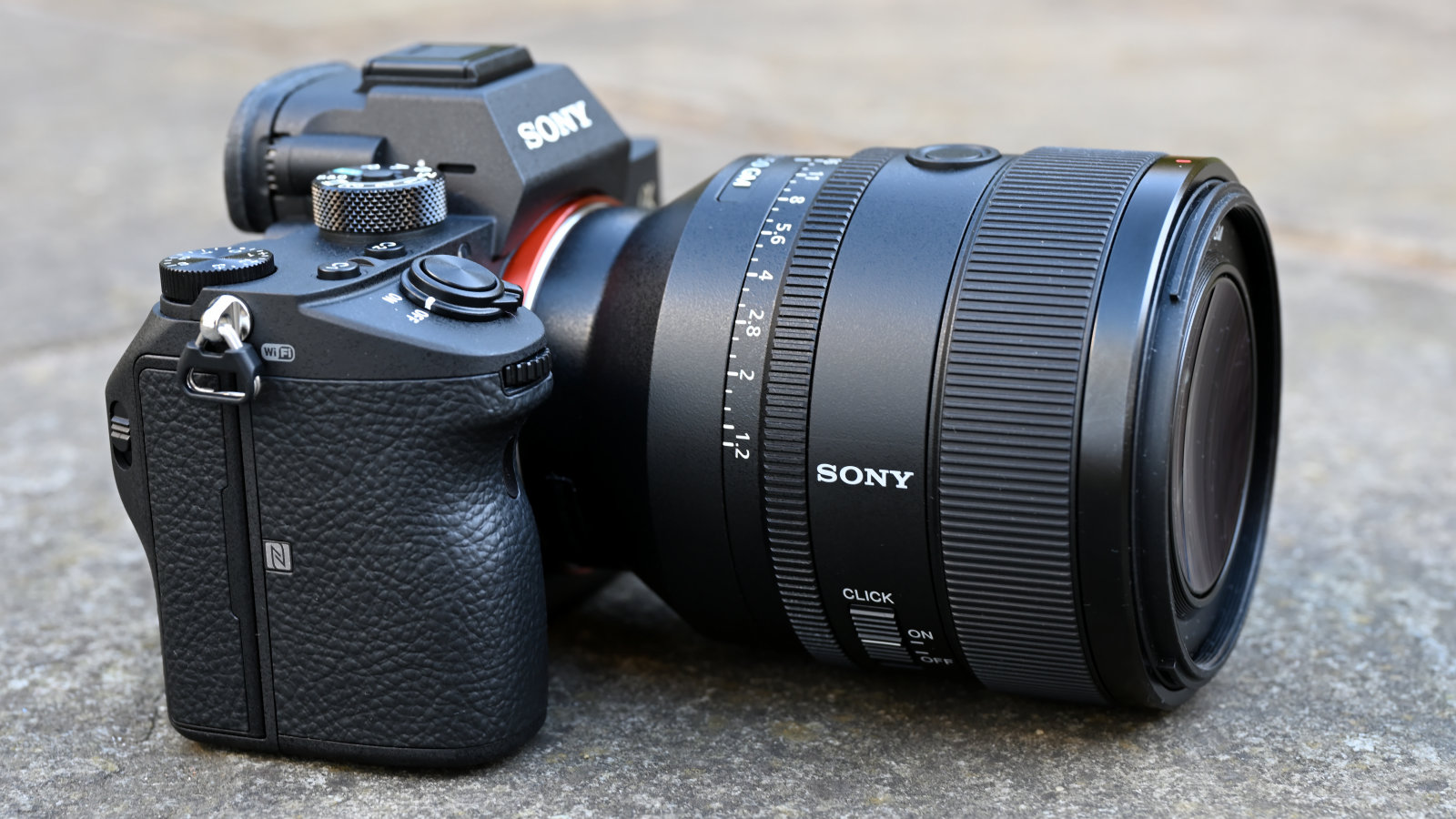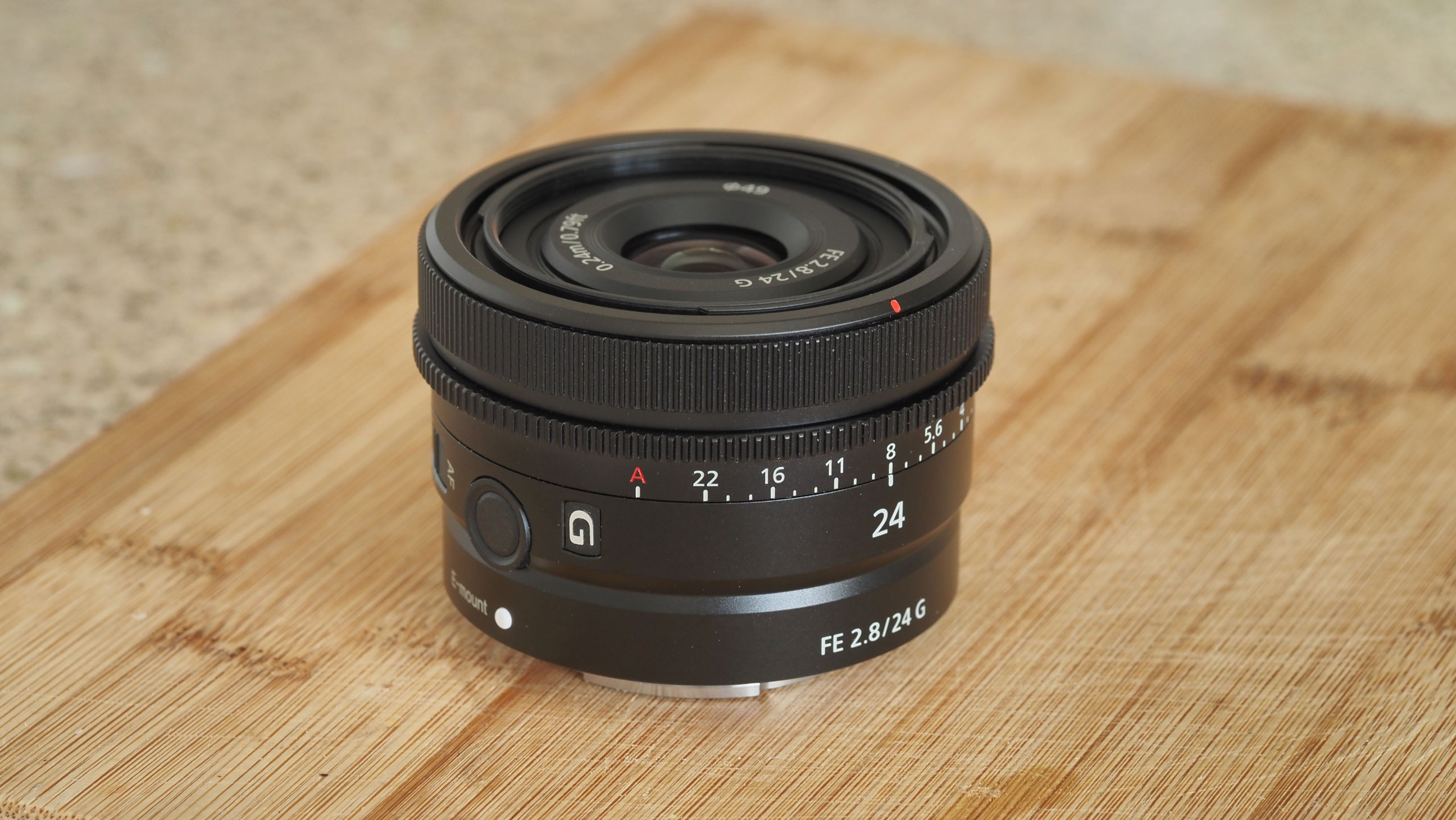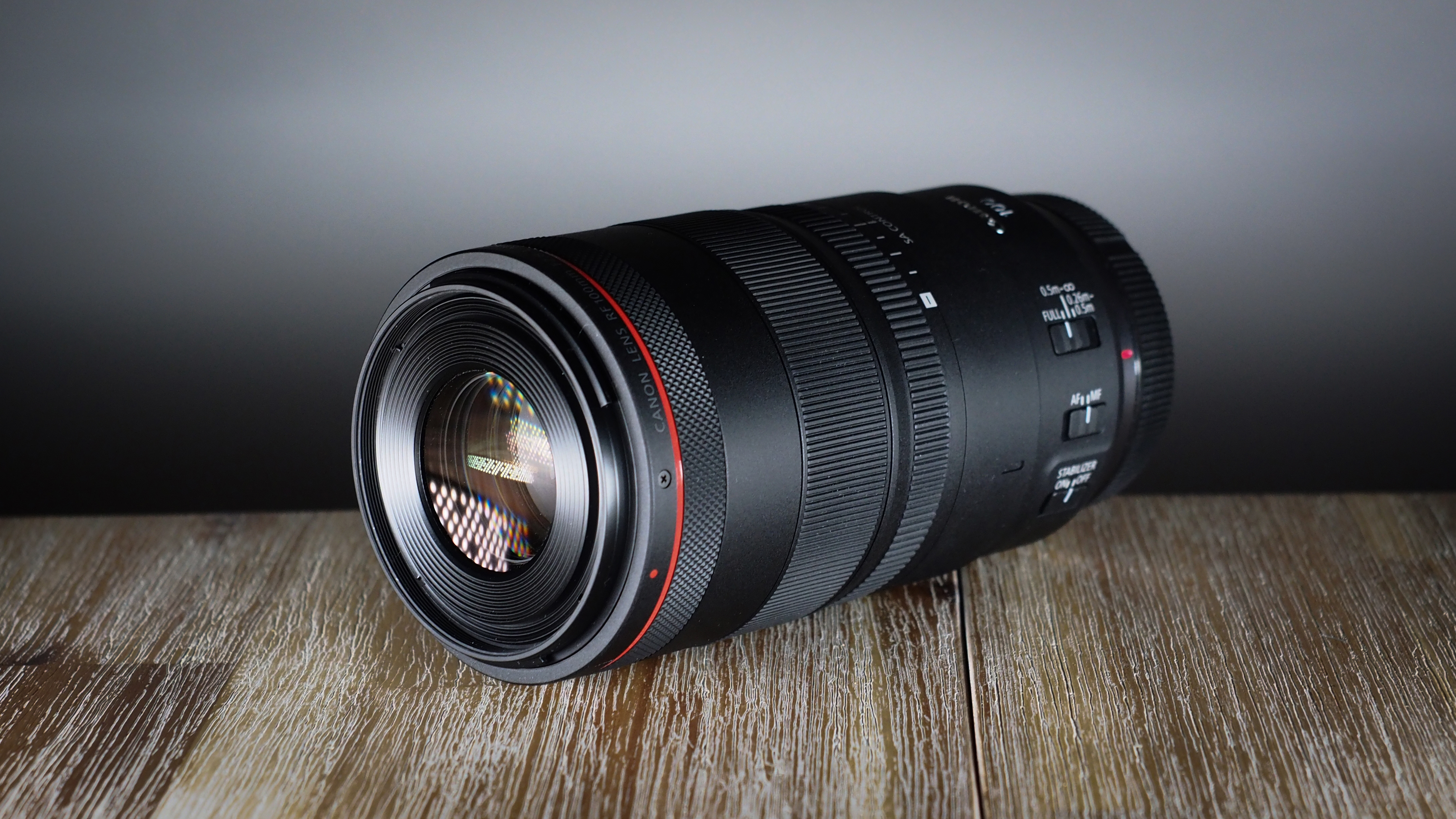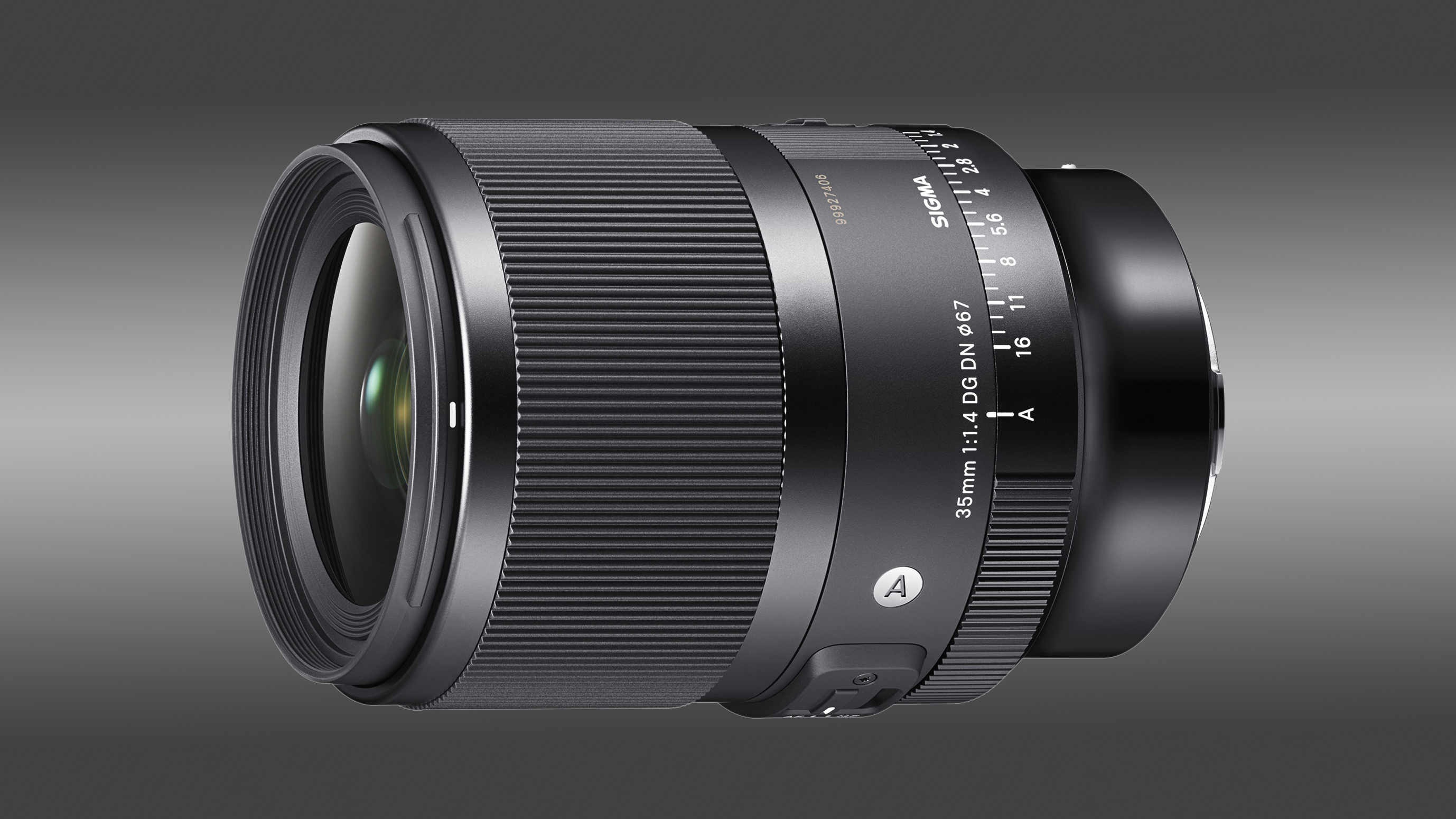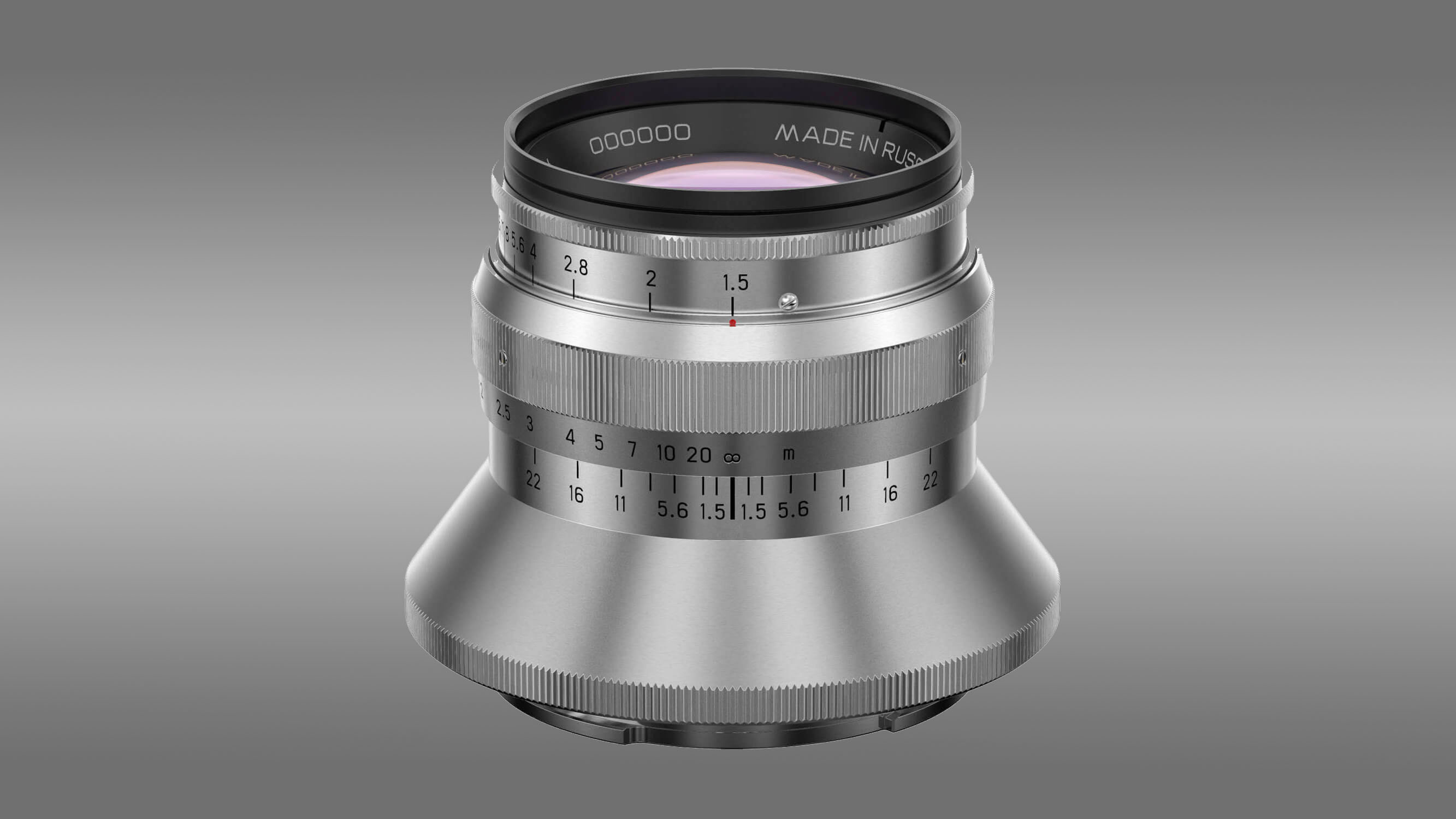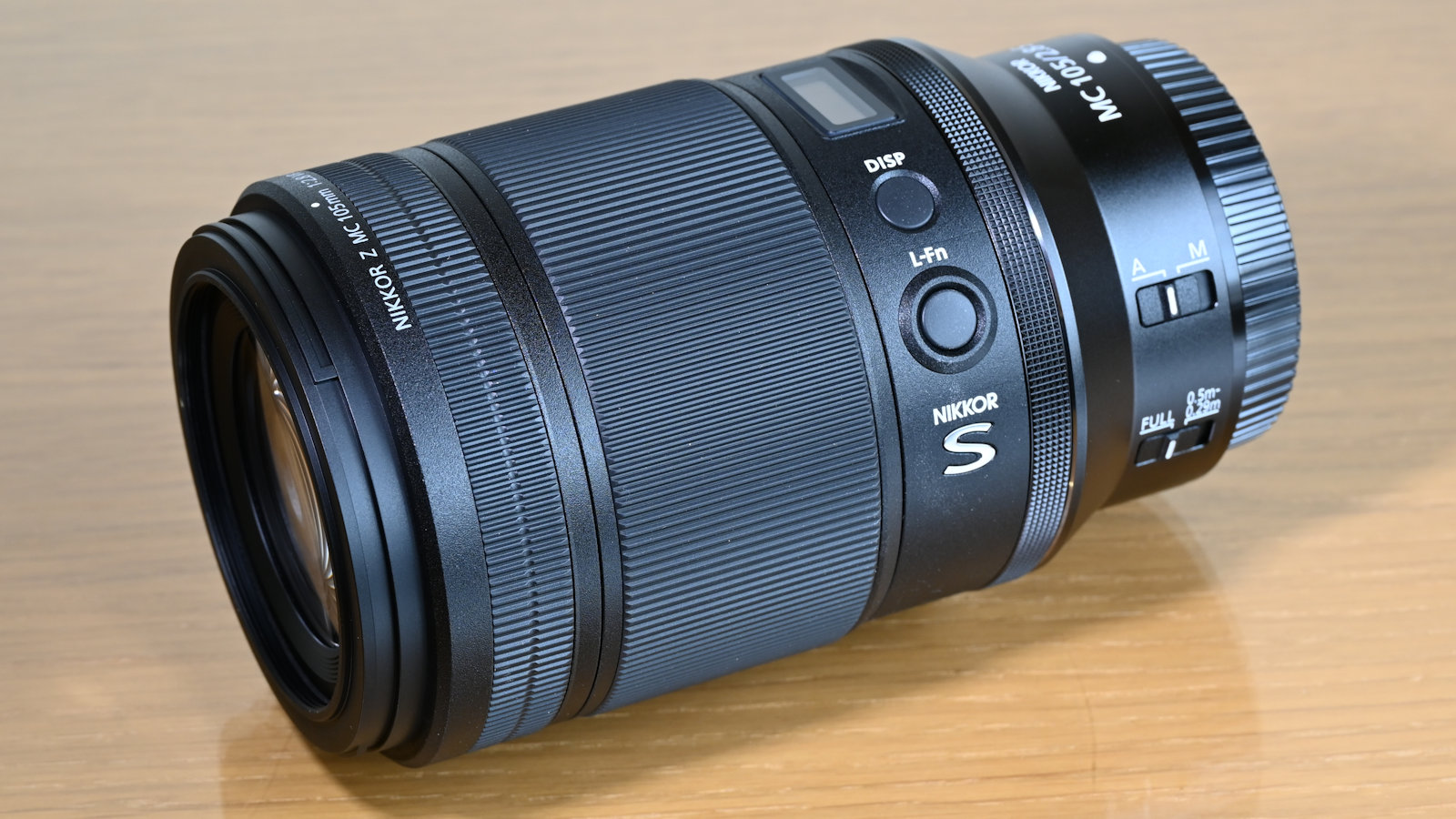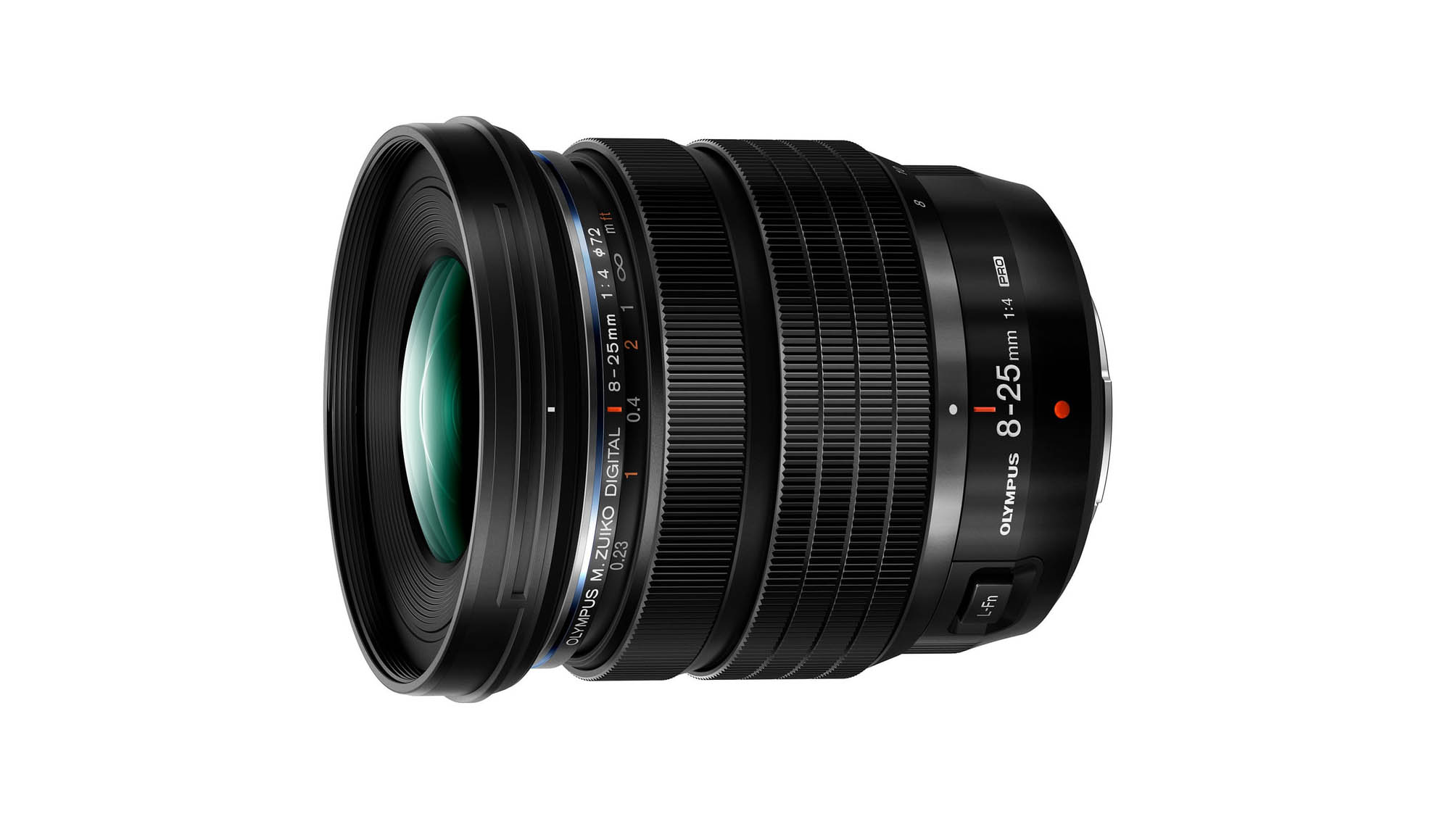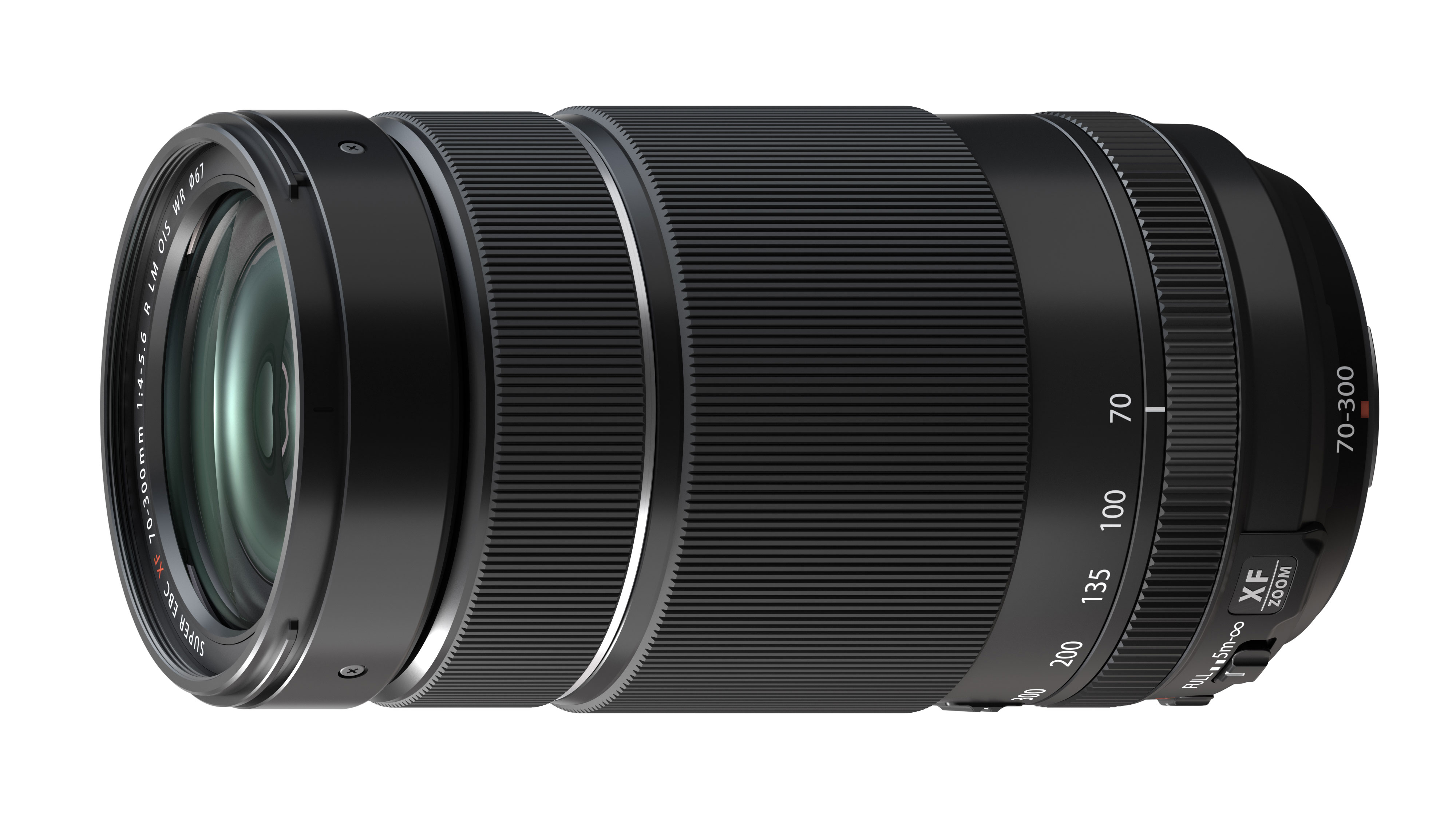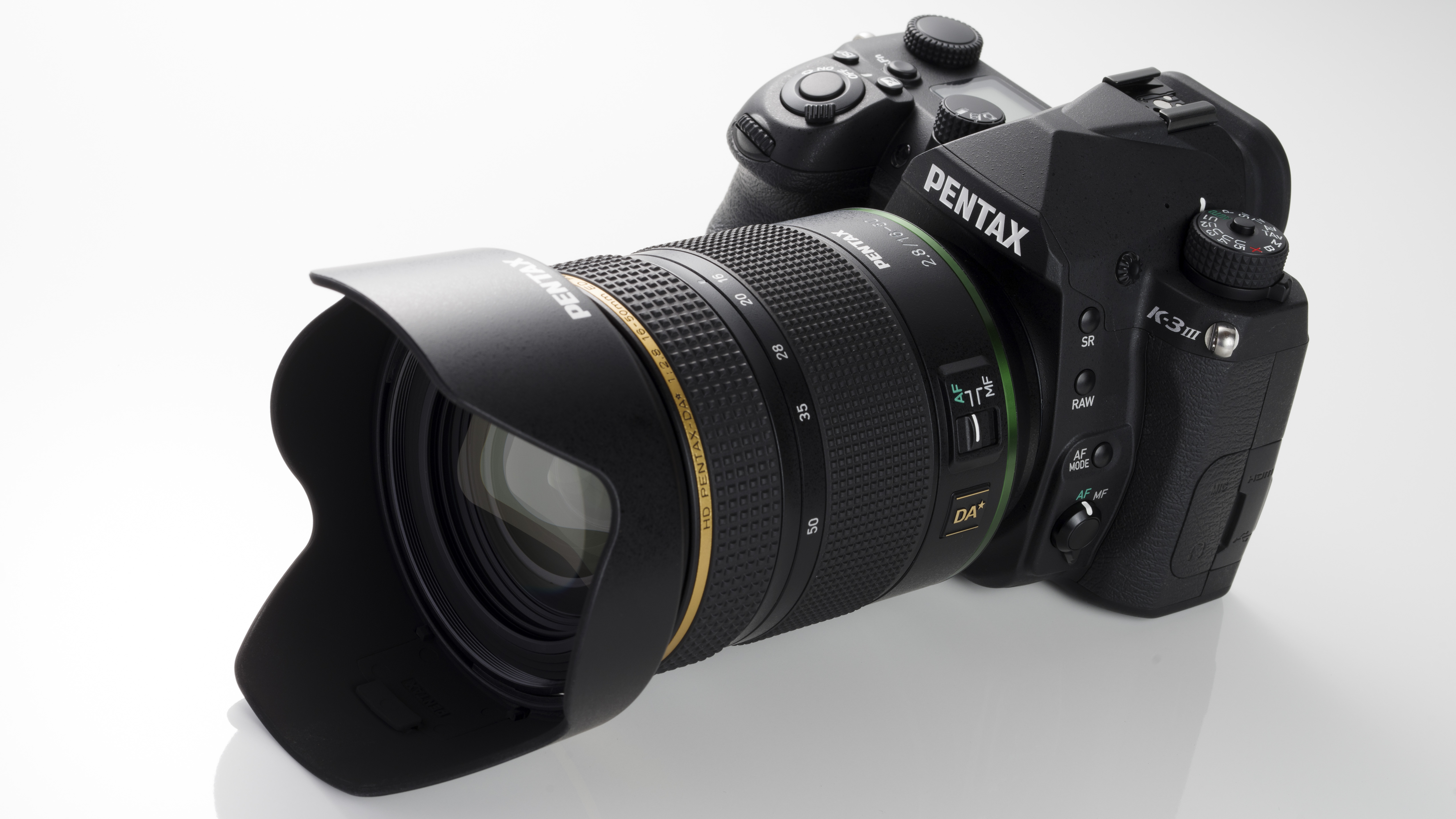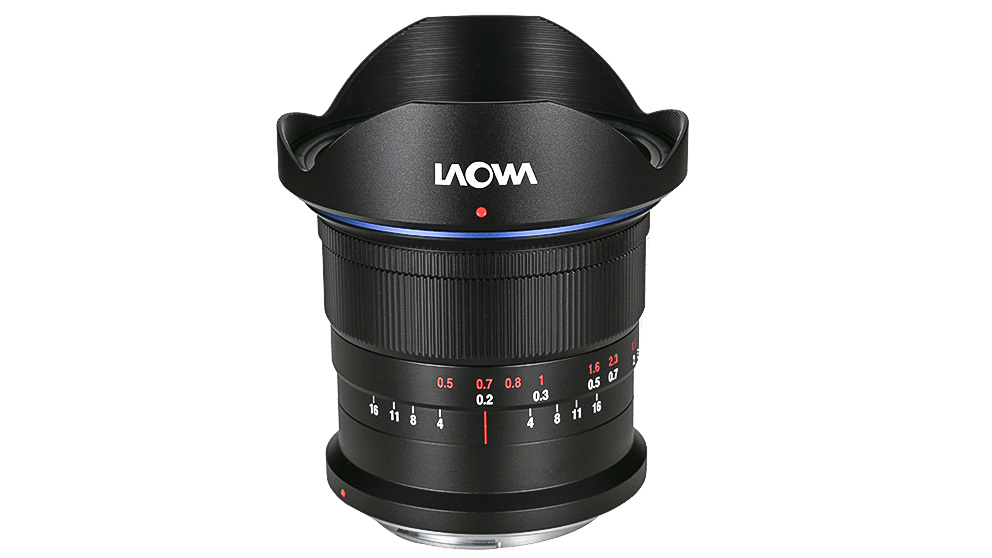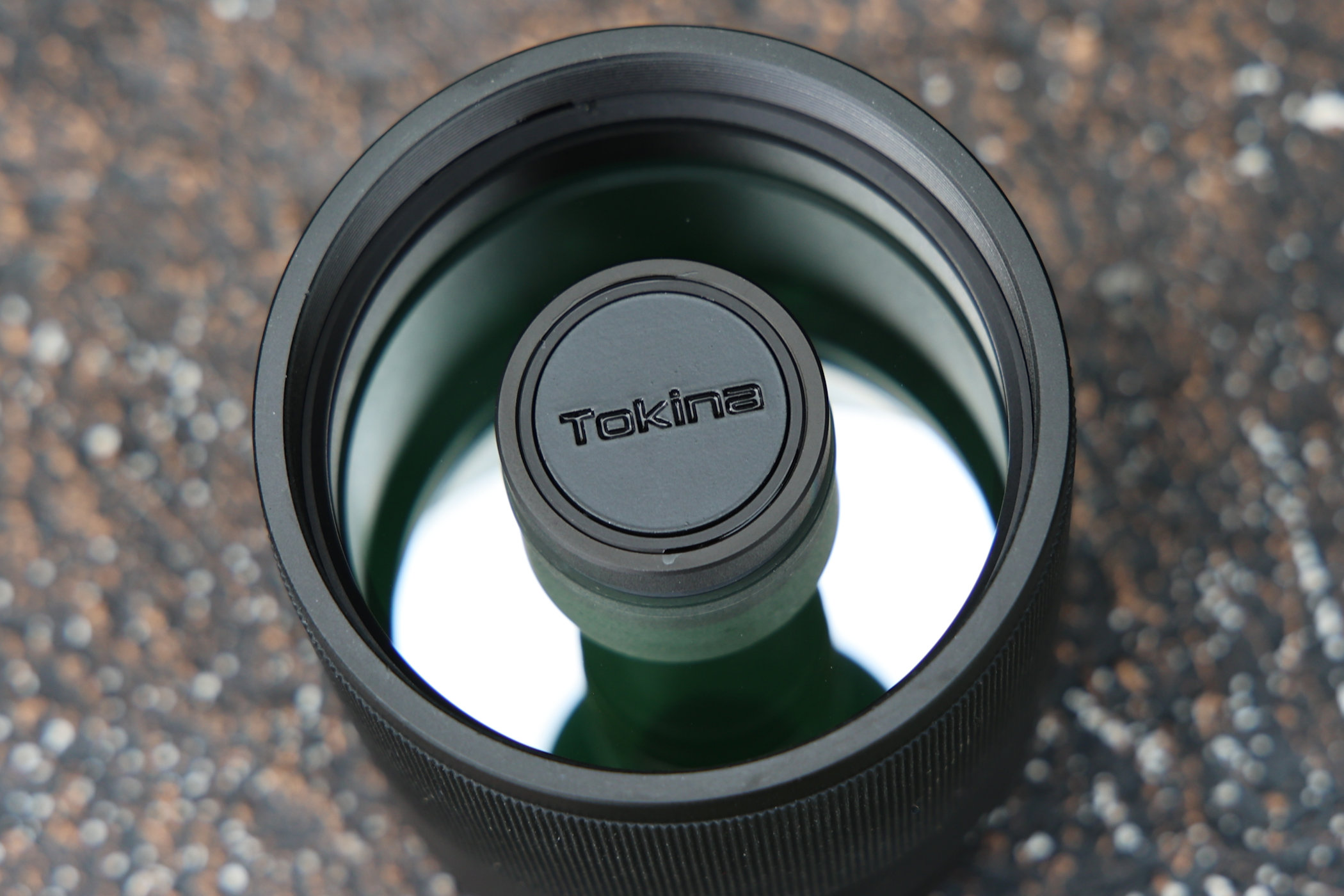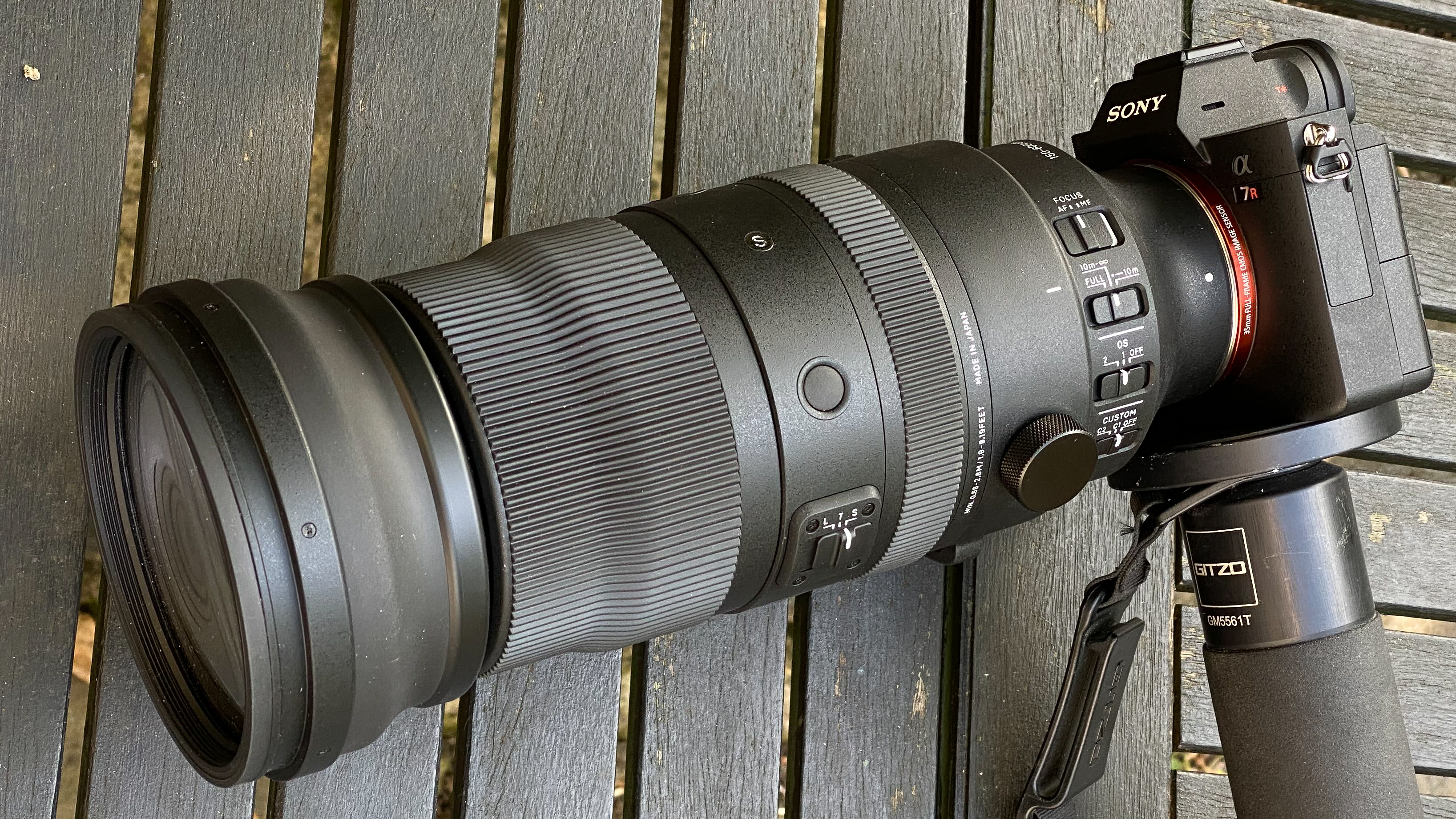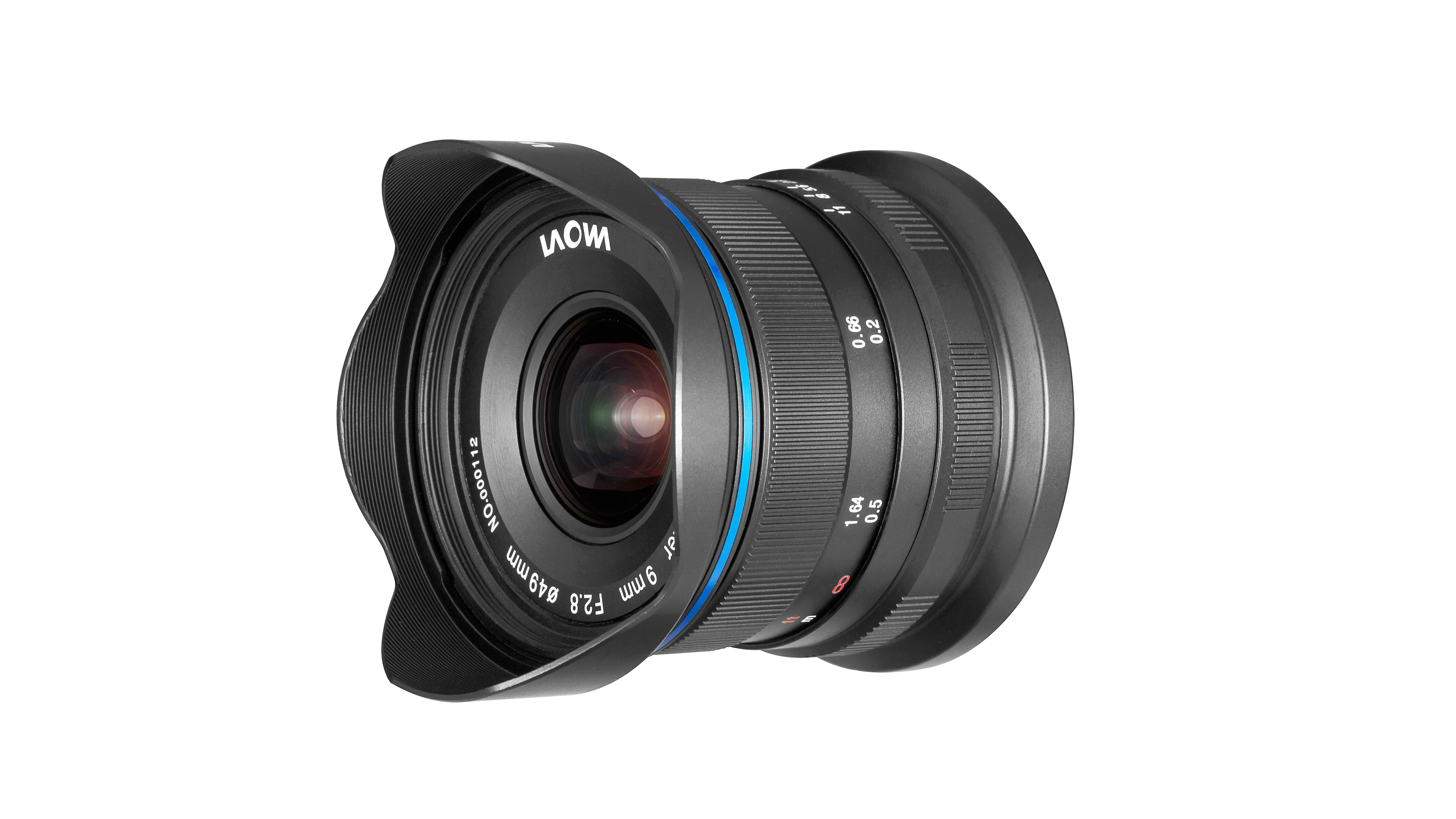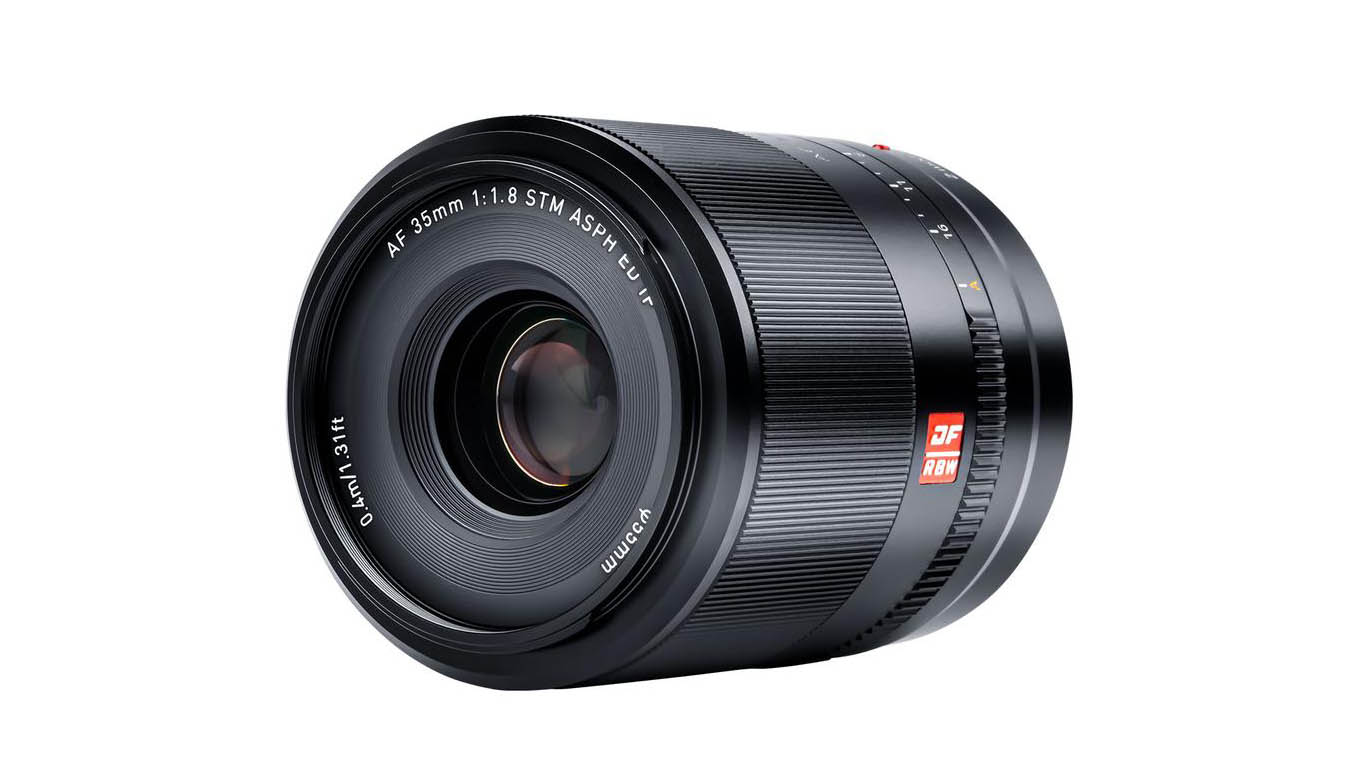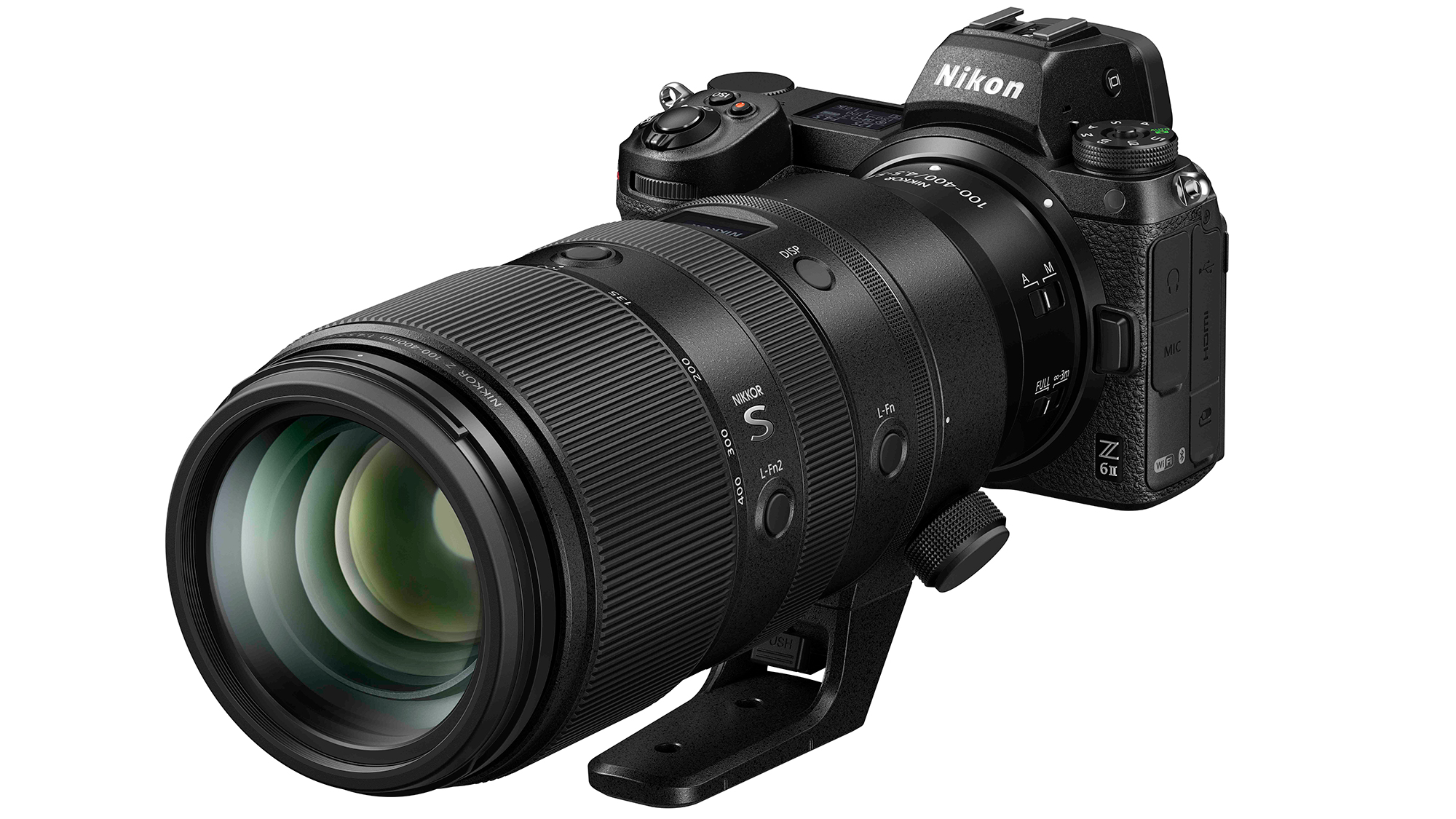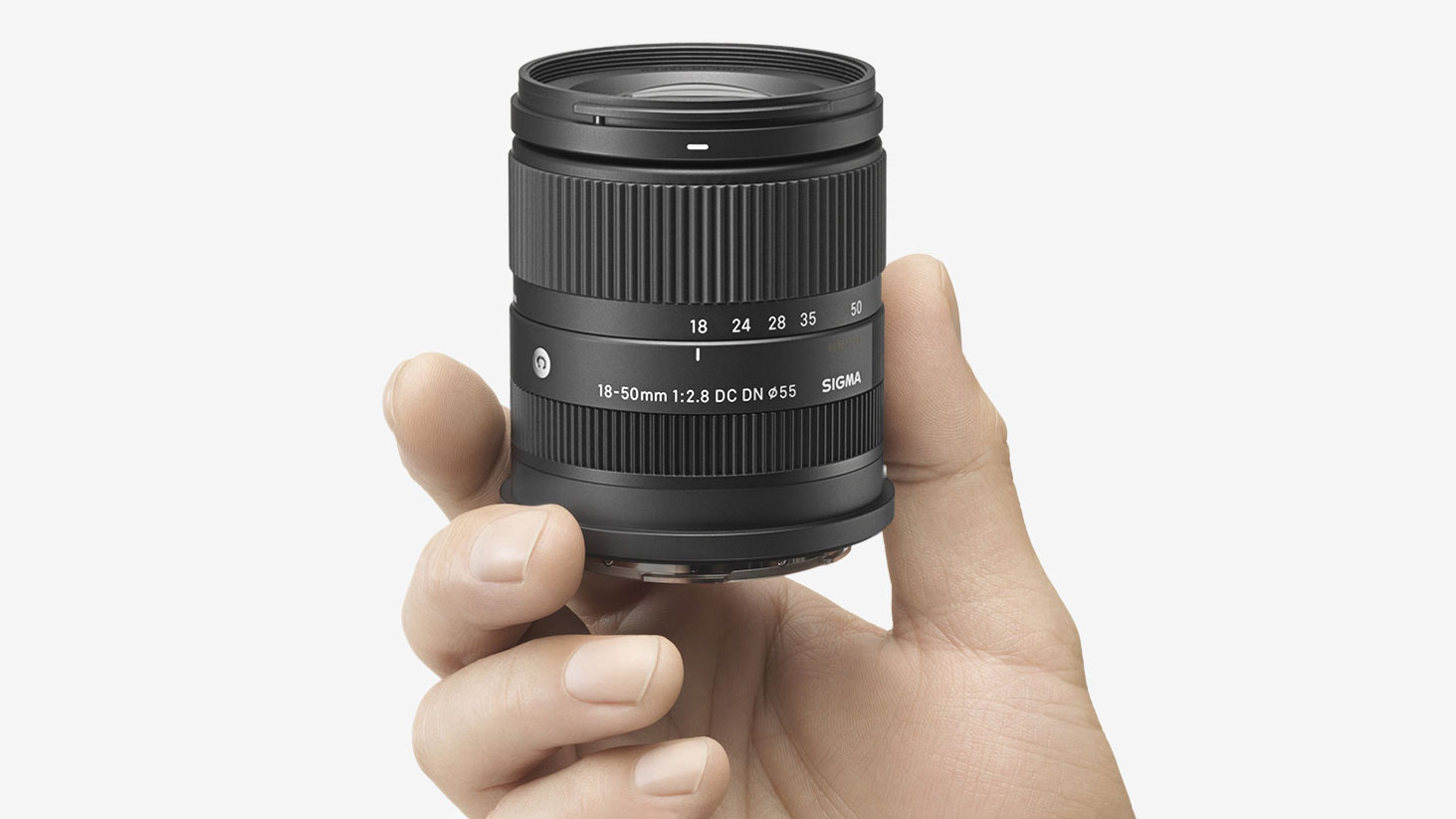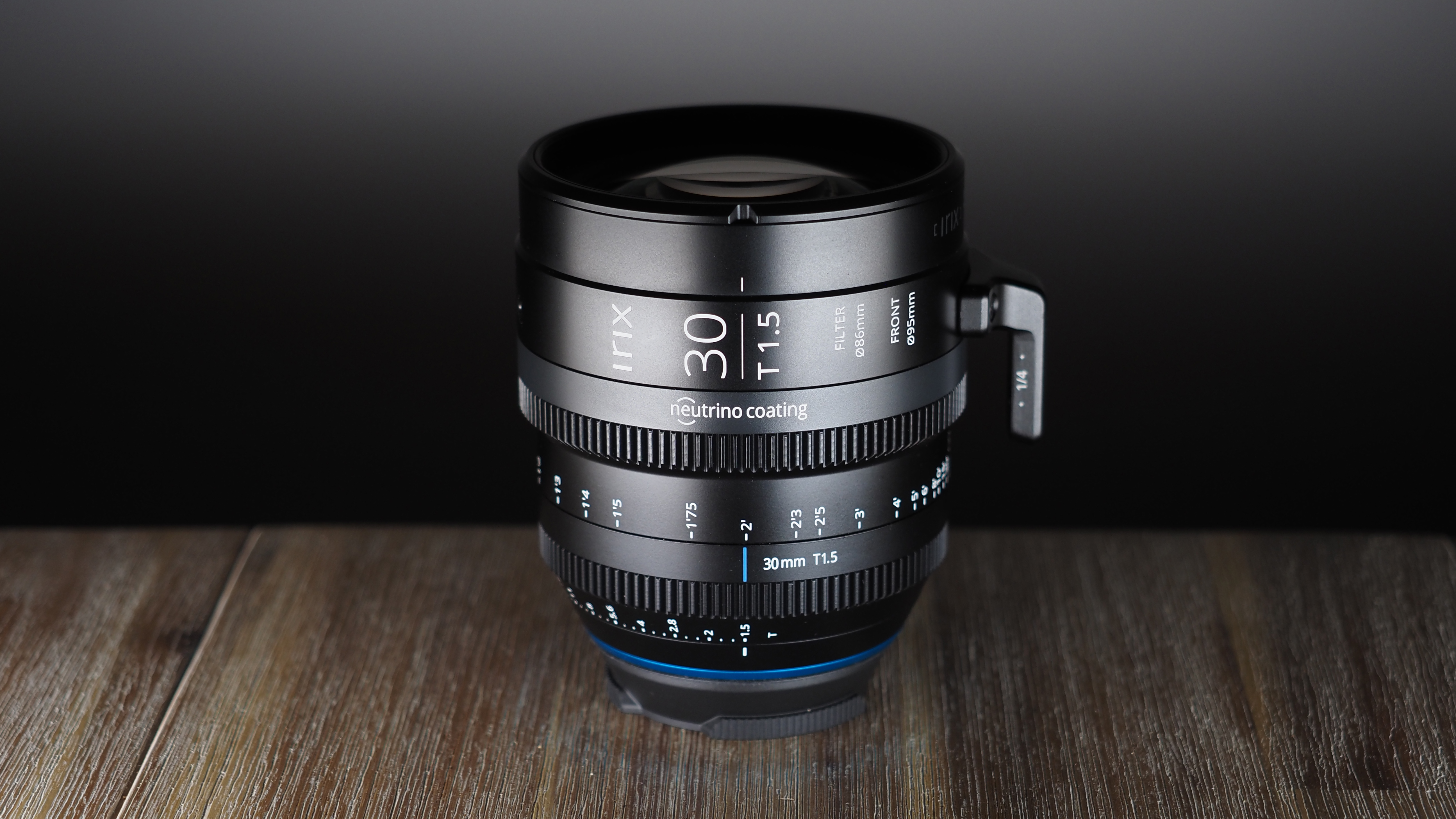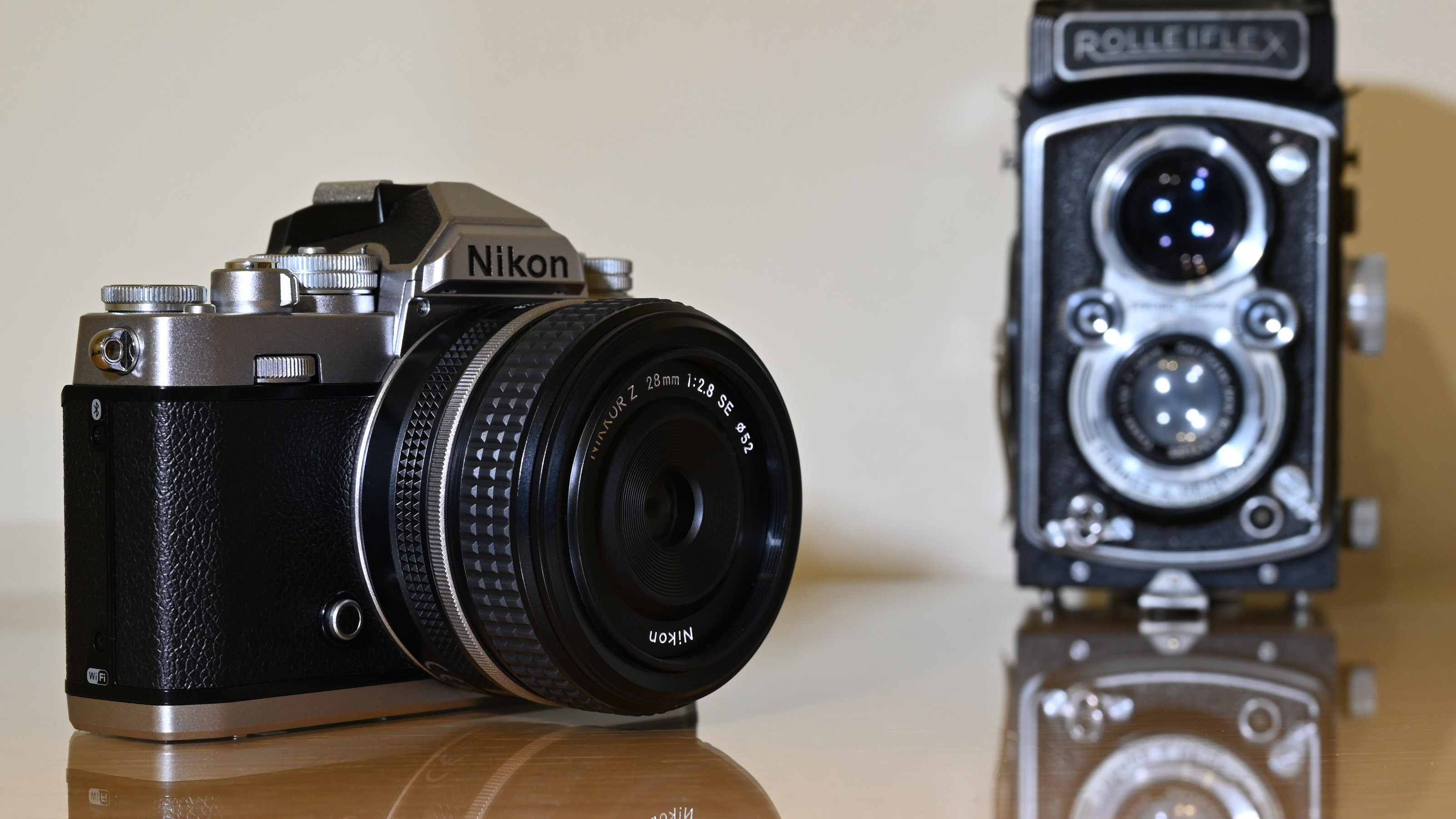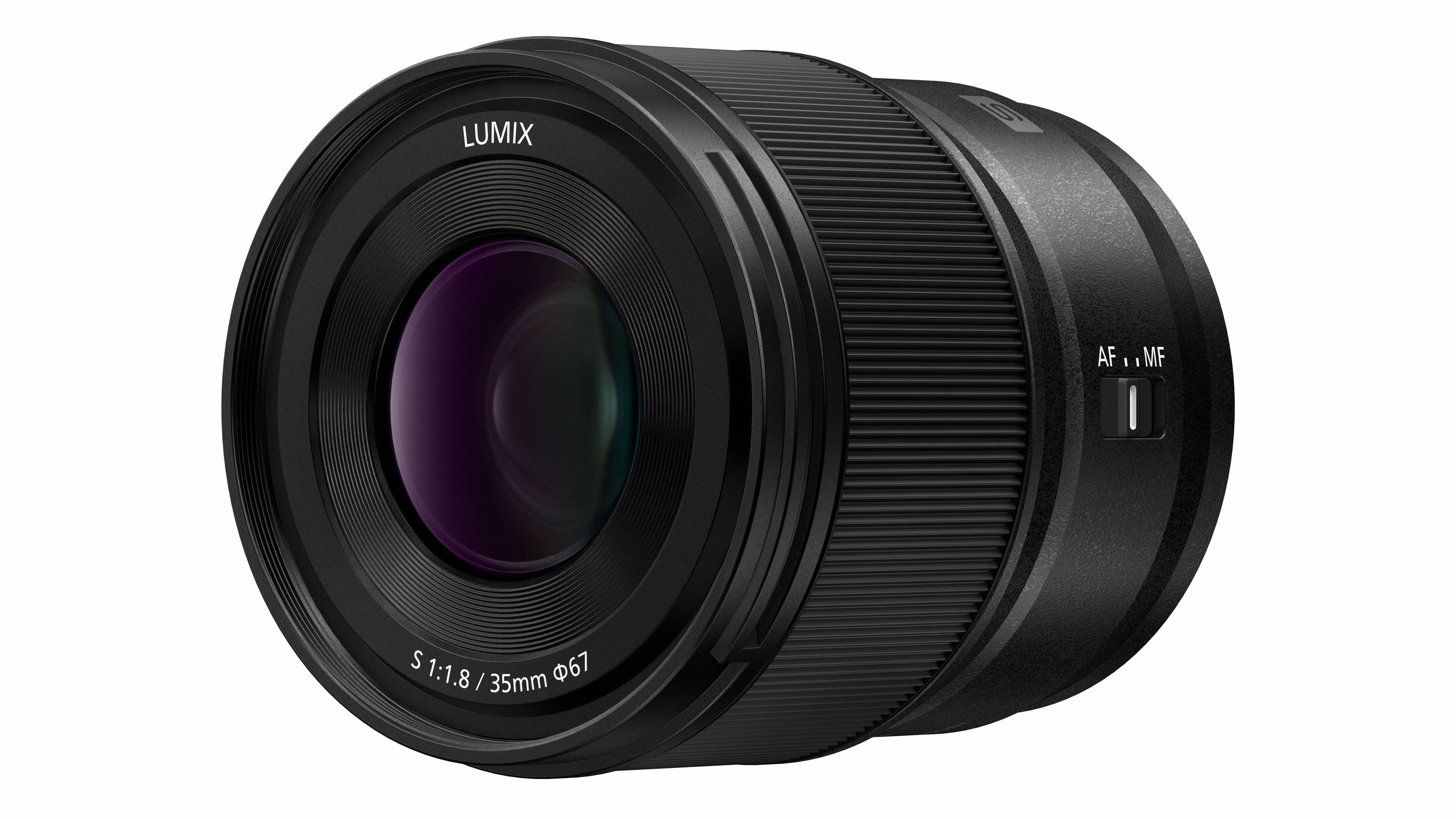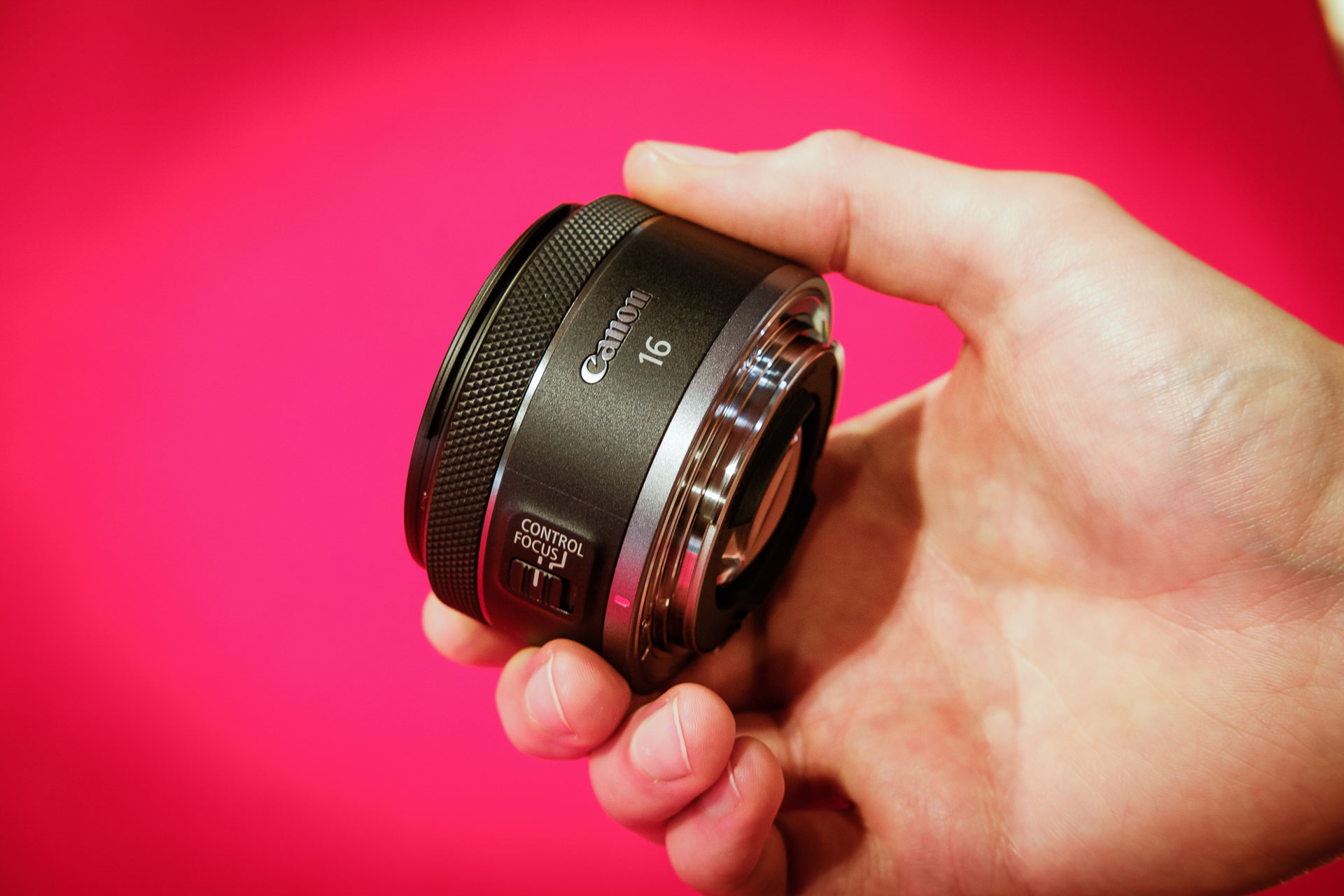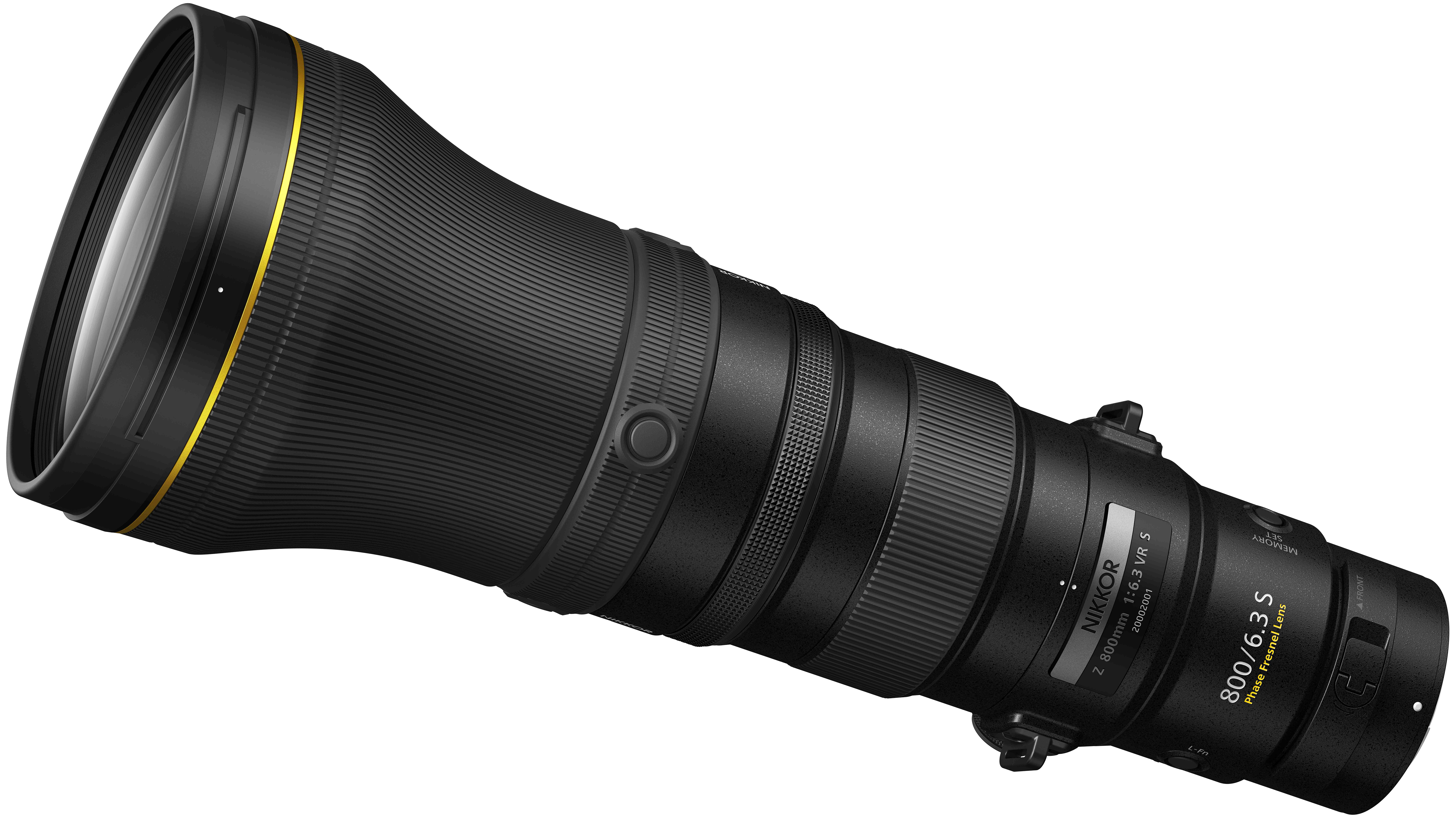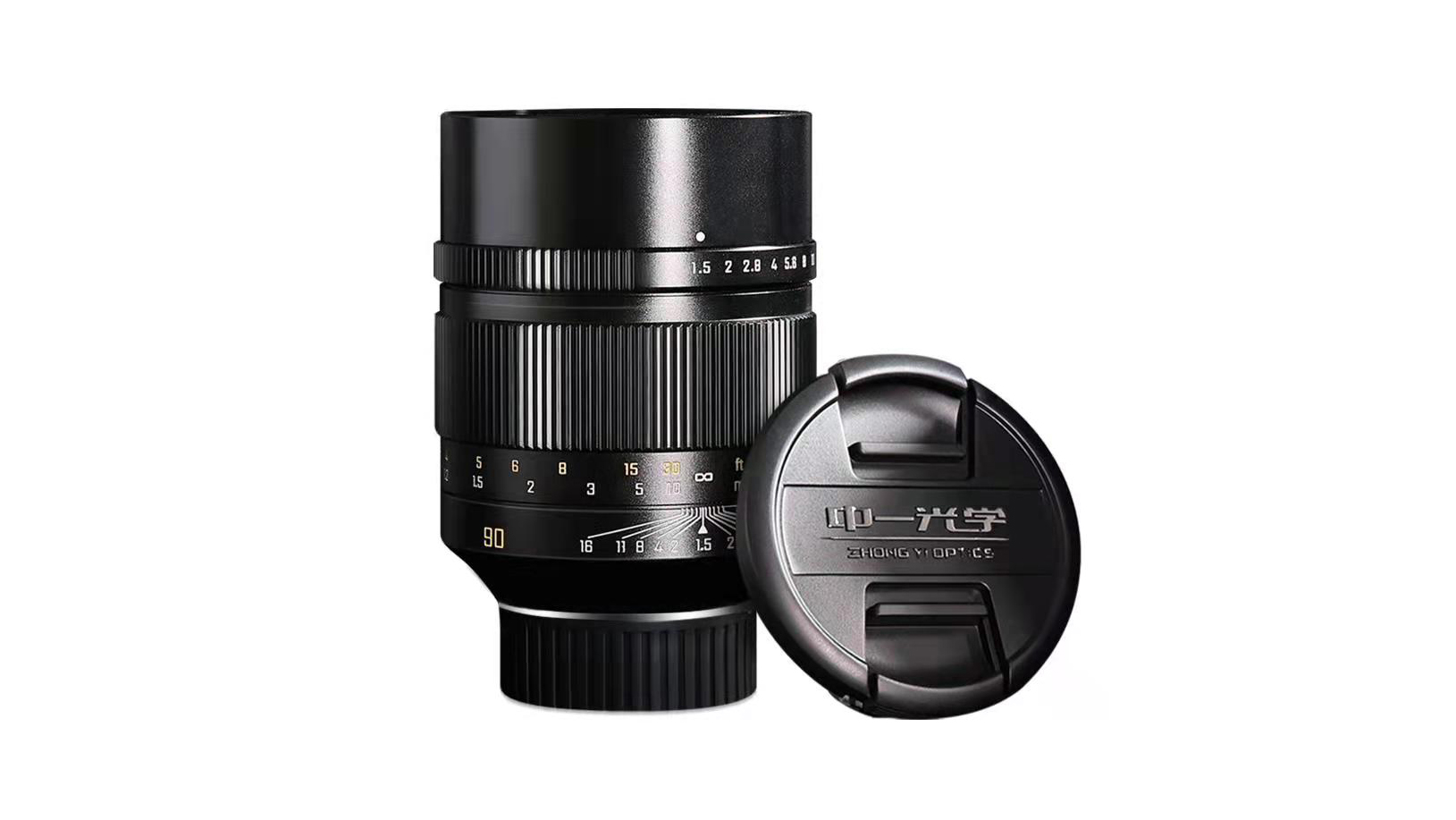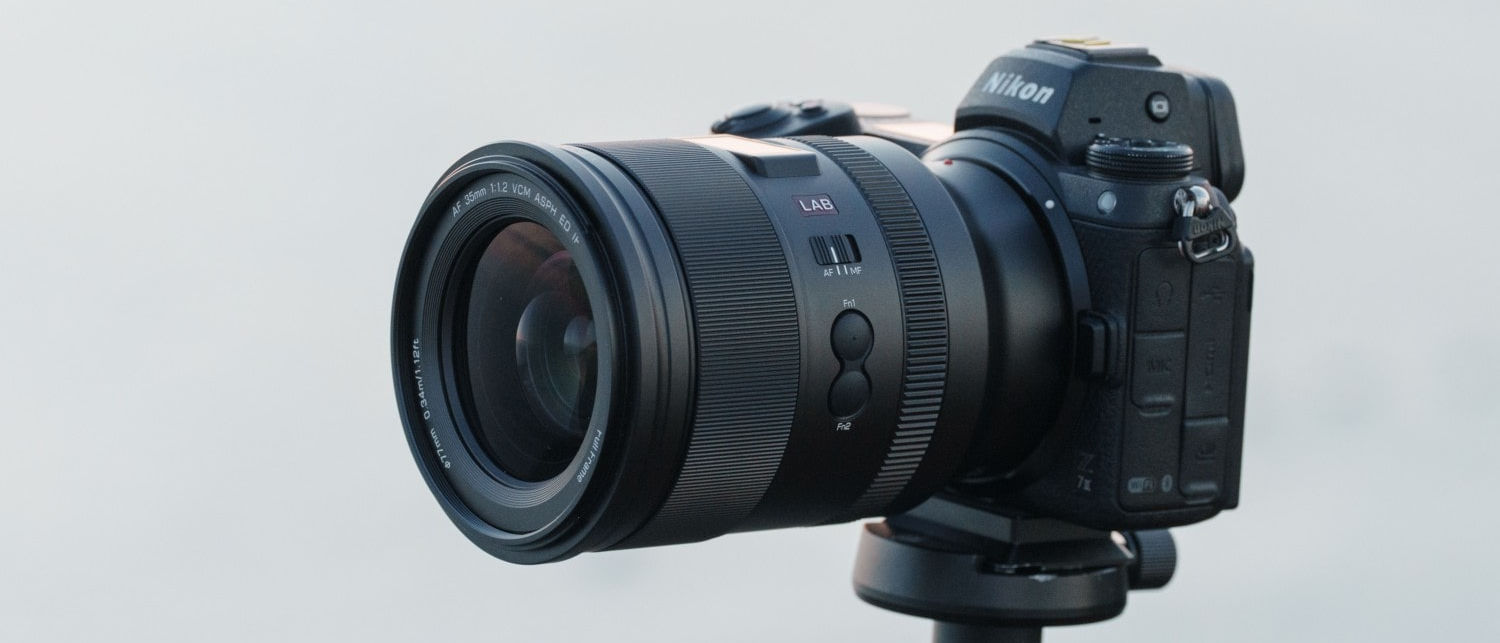Best lenses of 2021: from zooms to primes, fisheyes to supertelephotos!
We look back on all the best lenses released in 2021, and pick a favorite from each month – what a great year for lenses!
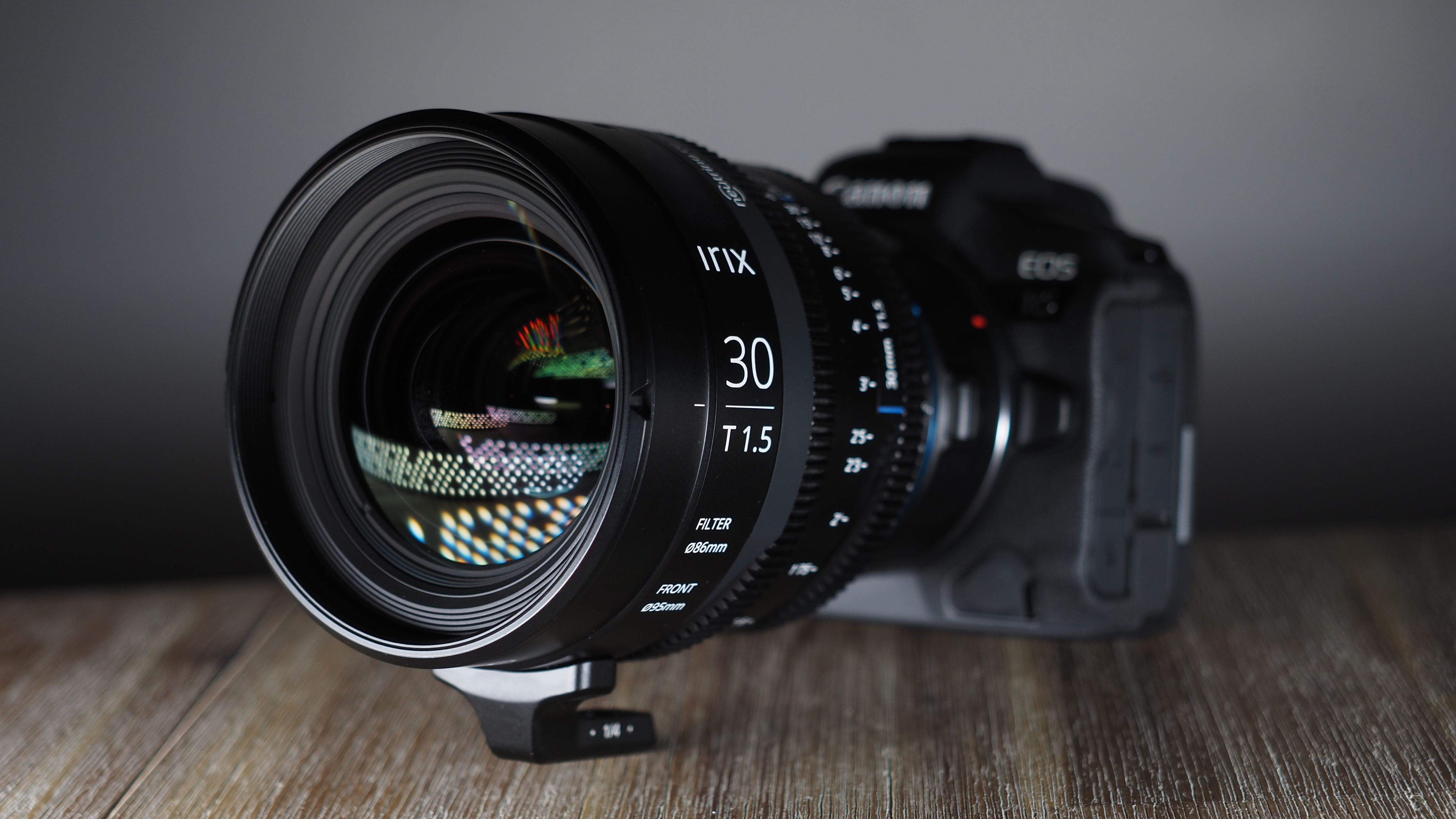
We’re taking a stroll back through 2021, revisiting all the new lenses that sprang up along the way and picking out a star attraction for each of the 12 months.
You'll see we've added links to all our original stories and lens reviews for the whole of 2021. We're in the middle of some big changes in the lens industry, with two very interesting new trends:
1) Smaller lenses, either primes or zooms, often sacrificing a little in terms of zoom range or maximum aperture for big gains in size and cost reduction.
2) A much wider choice of lower-cost independent and 'artisan' lenses, often with manual focus, sometimes with outrageous maximum apertures!
So here's our list of every lens story we covered in 2021... and there's a lot!
January 2021
Lighting the fuse for new-year fireworks, Sony sparkled with the launch of its FE 35mm F1.4 G Master, inheriting all of the customary optical finesse and handling refinements of its G Master siblings. Coupling a classic, moderately wide field of view with a fast f/1.4 aperture, it was set to become an instant favorite, also earning a 5-star review and gold award from us.
Proving that full-frame isn’t the only new-year’s party in town, Fujifilm’s January announcements included two new X-mount lenses in the diminutive shape of the Fujinon XF27mmF2.8 R WR pancake prime and the larger Fujinon XF70-300mmF4-5.6 R LM OIS WR, giving fairly standard and super-telephoto perspectives respectively, thanks to the system’s APS-C crop factor. The company also announced its fastest medium-format lens to date for the GFX system, the Fujinon GF80mmF1.7 R WR. Not to be outdone, Irix served up the super-speedy 45mm f/1.4 Dragonfly, claiming top spot as the world’s fastest GFX lens, even if it lacks autofocus.
Bearing price tags more akin to ‘January sales’, announcements came thick and fast from 7Artisans. Impressively engineered manual-focus offerings included the 7.5mm f/2.8 II fisheye, the 55mm f/1.4 II portrait-friendly lens and the 60mm f/2.8 II macro, all designed for APS-C and Micro Four Thirds crop-sensor cameras. For full-frame mirrorless cameras, there was also the 7Artisans 10mm f/2.8 fisheye, in Canon RF, Nikon Z and Leica L flavors.
Firing up the afterburners, Venus Optics served up four ultra-fast new trailblazing manual lenses for crop-sensor cameras, including the Laowa 25mm f/0.95 in MFT mount, the Laowa 33mm f/0.95 in Fujifilm X mount and the Laowa 35mm f/0.95 and 45mm f/0.95 for APS-C format Sony E-mount cameras. The company also gave a sneak preview of its full-frame Laowa 35mm f/0.95, equally adept at stills and video capture.
For a truly cinematic experience, announcements included the budget-friendly Samyang 14mm T3.1 VDSLR Mk2, the mid-range Tokina Cinema Vista 65mm T/1.5 and the up-market Fujinon Premista 19-45mm T/2.9.
Our test lab had a similarly hectic start to the new year, with several lenses being put through their paces. First up was the newly launched Sony FE 35mm F1.4 G Master, followed by a pair of Sigma 35mm F2 DG DN Contemporary and 65mm F2 DG DN Contemporary lenses, available in both Sony full-frame E-mount and Leica L-mount. Hot on their heels were the compact and lightweight Nikon Z 24-50mm f/4-6.3 standard zoom and two Fujifilm X-mount wide-angle and standard zooms, namely the Fujinon XF 10-24mm F4 R OIS WR and Fujinon XF 16-80mm F4 R OIS WR. All in all, quite a month and a hefty kick-off for the new year!
February 2021
Canon’s RF 70-200mm F2.8 ‘trinity’ zoom is unusually small with an equally unusual extending inner barrel, at least for this class of lens. The F4 edition launched in February is even smaller, with a retractable design, measuring just 84x119mm and weighing in at a mere 695g. That’s amazingly compact for a full-frame telephoto zoom. In other news, Canon RF 24mm F1.4L and RF 50mm F1.4 lenses appeared on the distant horizon.
Sigma was also in the downsizing business, announcing a new 28-70mm f/2.8 DG DN Contemporary standard zoom for Sony FE and L-mount cameras. It’s about 40 per cent lighter than the 24-70mm DN Art edition, and a more natural fit on slinky mirrorless cameras. Even so, the Sigma looks lardy compared with the frankly tiny own-brand Sony FE 28-60mm f/4-5.6 that hit the shelves in February.
Leica L-mount launches certainly weren’t slowed by any adverse winter weather conditions. Leica itself unveiled the APO-Summicron-SL 28 f/2 ASPH., the company’s first wide-angle prime in the SL line-up. It’s a top-quality lens but the price tag demands a fat wallet.
Another linchpin of the L-mount alliance, along with Leica and Sigma, Panasonic announced the LUMIX S 70-300mm F4.5-5.6 MACRO O.I.S., its classic design combining a long-favored telephoto range with a variable aperture rating. It’s a quality item though, not to be confused with run of the mill, low-budget 70-300mm zooms.
At the budget-friendly end of the price scale, Venus Optics beefed up its L-mount range with four new manual lenses, including the Laowa 4mm f/2.8 Fisheye, Laowa 9mm f/2.8 Zero-D ultra-wide-angle, Laowa 24mm f/14 2X Macro Probe and Laowa 25mm f/2.8 2.5-5X Ultra Macro. There’s a catch though, in that the fisheye and 9mm aren’t actually full-frame compatible, and need to be used in APS-C crop mode on full-frame cameras.
Venus Optics also announced the world’s widest-angle lens for Canon EOS R-series full-frame mirrorless cameras, in the surprisingly diminutive shape of the Laowa 11mm f/4.5 FF RL. There was a little something for Nikon Z-series shooters as well, with the launch of the Laowa 65mm f/2.8 2x Macro APO. Following in the footsteps of the larger 100mm model that’s available for various makes of both DSLRs and mirrorless cameras, this manual lens delivers an impressive 2x macro magnification at its shortest focus setting.
Down in February’s bargain basement, announcements included the full-frame Lomography Atoll Ultra-Wide 2.8/17 Art (assembled by hand, no less), the super-fast Kamlan KL 32mm f/1.1 and the Micro Four Thirds-mount Yongnuo 25mm f/1.7 ASPH, an autofocus lens and the first Yongnuo to feature an aspherical element.
The newly announced Canon RF 70-200mm F4L IS USM made its way to our lab for a February review. We also gave our full attention to the Fujifilm Fujinon GF 32-64mm f/4 R LM WR, Laowa 10mm f/2 Zero-D and the Samyang AF 85mm f/1.4 RF.
March 2021
Sony turned 60 back in March, in as much as it unveiled its 60th E-mount lens. To the astonishment of many, it managed to shoehorn a super-fast f/1.2 aperture into the admittedly bulky form factor of the FE 50mm F1.2 G Master.
That’s quite an achievement considering that such a feat was considered impossible in some quarters, due to the relatively small diameter of Sony’s E-mount flange. Winning through, the new lens goes head-to-head with competing mirrorless mount 50mm f/1.2 primes from Canon and Nikon.
For those hankering after something more compact and lightweight to hang on their Sony mirrorless bodies, the company also announced new FE 24mm f/2.8 G, 40mm f/2.5 G and 50mm f/2.5 G primes. The trio is designed with size in mind, or rather the lack of it, a telltale sign being the 49mm filter thread that’s common to all three lenses. They’re also very similar in size and weigh around 170g a piece.
At the other end of the scale in every way, March saw the launch of the Olympus M.Zuiko Digital ED 150-400mm f/4.5 TC1.25x IS Pro. It’s a monster of a Micro Four Thirds lens, complete with an integrated tele-converter, delivering an ‘effective’ zoom range of 375-1000mm in full-frame terms. The price tag is pretty hefty too, but the Olympus undercuts similar full-frame super-telephotos from Canon and Nikon.
Following on from the previous month’s announcement of Leica’s relatively weighty APO-Summicron-SL 28 f/2 ASPH, the company launched the APO-Summicron-M 35 f/2 ASPH in March. Befitting M-series rangefinder cameras, rather than L-mount bodies, the new lens is typically small and lightweight. In fact, it’s the company’s most compact 35mm prime of all time.
Venus Optics certainly wasn’t standing still in March, racing ahead with four more announcements, this time for ultra-fast Argus f/0.95 primes, including a 25mm for Micro Four Thirds, a 33mm for APS-C, and a pair of 35mm and 45mm lenses for full-frame cameras.
Our March review-fest included full tests of the Laowa 15mm f/4.5 Zero-D Shift, Sigma 85mm F1.4 DG DN Art, Sony FE 24mm f/2.8 G, Sony FE 40mm f/2.5 G, Sony FE 50mm f/2.5 G and the Sony FE 100-400mm f/4.5-5.6 G Master OSS, which kept us out of mischief momentarily.
April 2021
Leaked images and a rumor mill running in overdrive drove speculation of just how special the forthcoming Canon RF 100mm F2.8L Macro IS USM might be. An official announcement followed in mid-April, confirming that Canon’s first native RF full macro lens (and then some) would combine a world-leading 1.4x macro magnification, at least for an autofocus lens, with a novel SA (Spherical Aberration) control ring for enhancing the quality of bokeh.
On top of that, there’s 5-stop hybrid optical image stabilization that works a treat for extreme close-ups, boosted to 8-stop effectiveness on later EOS R-series bodies that feature IBIS. All in all, the perfect lens with Spring bugs bursting forth to have their photos taken.
Professional action, sports and wildlife photographers the world over welcomed April’s announcement of Canon’s RF 400mm F2.8L IS USM and RF 600mm F4L IS USM super-telephoto primes. These direct updates of the company’s highly acclaimed EF-mount lenses for DSLRs were perfectly timed to coincide with the launch of the super-sporty Canon EOS R3 mirrorless camera. At the other end of the focal length scale, Canon submitted patents for ultra-wide-angle RF-mount zooms.
In other enticing wide-angle news for full-frame mirrorless photographers, announcements included the Sony FE 14mm F1.8 G Master, Samyang 24mm f/1.8 FE and Sigma 35mm f/1.4 DG DN Art. It was exciting times over in the crop-sensor camp as well, with an April shower of Samyang/Rokinon AF 12mm F2 E, Tamron 11-20mm F/2.8 Di III-A RXD and Fujinon XF18mm F1.4 R LM WR lenses. Tamron neatly covered off the super-telephoto side of things, with the 150-500mm F/5-6.7 Di III VC VXD, while Venus Optics announced its Laowa CF 33mm f/0.95 APO lens for APS-C format mirrorless Canon, Sony, Nikon and Fujifilm cameras.
Satisfying the need for speed on a tight budget, TTartisan popped up with a 50mm f/1.2 lens in Leica L and Nikon Z mount options, complete with a sub-$100 price tag. And for a more fully cinematic experience, Mitakon launched three 17mm, 25mm, 35mm T/1.0 lenses for Micro Four Thirds, plus a 35mm T/1.0 for Super35 and a 50mm T/1.0 full-frame lens, again combining ultra-fast apertures with irresistibly affordable prices.
April was a bit quiet on the reviews front but we did rather fall in love with the Sony FE 50mm F1.2 G Master, which surpassed itself in our tests.
May 2021
It’s rare to find a lens that gives you an utterly different perspective on the world, but the mammoth field of view and extreme barrel distortion of a fisheye lens definitely lets you see things differently.
The new 7Artisans 10mm f/2.8 Fisheye was first spotted on a Nikon Z body back in May but is also available in Canon RF, Leica L and Sony E mount options. As a ‘diagonal fisheye’ for full-frame mirrorless cameras, it produces an image circle that fills the whole sensor, delivering an almost 180-degree viewing angle on the diagonal. This manual lens is impeccably turned out with a full metal jacket, is top fun to use and delivers superbly sharp image quality for a fisheye, all at a very budget-friendly price.
With historical links to 7Artisans, TTartisan also had a May release with its new portrait-friendly 90mm f/1.25 in Leica M-mount, at only a quarter of the price of Leica’s equivalent own-brand lens. Meanwhile, proving that not all Leica lenses cost an absolute fortune, the Leica Vario-Elmarit-SL 24–70mm f/2.8 ASPH was announced, as the company’s most inexpensive zoom. Even so, it’s certainly not a low-budget offering.
Continuing the theme of taking a different slant on perspective, May brought exciting news on the tilt & shift front. Canon appeared to be going great guns on developing two new RF-mount lenses which are planned to become the world’s first autofocus examples of the breed. They’re the Canon TS-R 24mm f/3.5L and the Canon TS-R 14mm f/4L, the latter also being the most wide-angle tilt & shift lens to date. Only just though, as the manual Laowa 15mm f/4.5 Zero-D Shift (without tilt) also hit the news with the addition of Leica L and Pentax K mount options to the existing line-up of Canon EF and RF, Nikon F and Z and Sony E-mount editions.
Further out on the fringe, May was a good month for fans of all things retro, with the launch of the Voigtlander Ultron Vintage Line 28mm f/2 Aspherical VM lens for Leica M-mount. Having a distinctly 1950s sci-fi look, Zenit released 35mm f/2 and 50mm f/1.5 lenses in Sony E-mount, along with Zenitar 60mm f/2.8 macro and Selena 58mm f/1.9 lenses in Canon EF and Nikon F-mount options.
Our raft of reviews in May included the Fujifilm Fujinon XF27mmF2.8 R WR, Funleader CAPLENS 18mm F8.0 for Leica M mount, Sony APS-C format Samyang AF 12mm F2.0 E and the full-frame Sony format Samyang AF 24mm F1.8 FE.
June 2021
We’ve waited a long time for a native Nikon Z-mount ‘Micro’ lens and then, like buses, two arrived at the same time. The Nikon Z MC 105mm f/2.8 VR S is a completely serious macro lens with a seriously strong feature-set and enhanced handling characteristics, as featured in the company’s pro-grade ‘trinity’ f/2.8 zooms.
The Z MC 50mm f/2.8 is a more light-hearted affair, and significantly more compact and lightweight, working brilliantly well as a standard prime while also boasting full 1.0x macro magnification.
Continuing the compact, lightweight theme, Nikon also announced the Z 28mm f/2.8 and Z 40mm f/2 full-frame primes, the Z 28mm later becoming available in an SE (Special Edition) version with retro styling, ideally matched to the APS-C format Z fc camera on which it gives an ‘effective’ focal length of 42mm, while still being fully compatible with full-frame Z-series bodies. More firmly in the DX camp, the Z DX 18-140mm f/3.5-6.3 VR was also announced in June, becoming just the third APS-C format lens in Nikon’s Z-mount line-up, and the first and only superzoom.
Another crop-sensor highlight was the first new lens announced by Olympus in a very long while, but the M.Zuiko 8-25mm f/4.0 Pro was well worth the wait with its thoroughly pro-grade credentials and build quality. Venus Optics served up a comparatively ‘diet’ Micro Four Thirds option with a new Laowa 7.5mm f/2 lens that’s less than a couple of inches long and weighs in at just 150g. Suiting a really tight budget, TTartisan launched yet another manual prime for various APS-C format cameras, as well as Micro Four Thirds, namely the TTartisan 17mm f/1.4.
Shifting up from Micro Four Thirds to full-frame cameras, Panasonic and other L-mount body owners were treated to the availability of a new super-speedy and highly affordable Mitakon Speedmaster 50mm f/0.95 III, from Zhong Yi Optics. For those preferring new-fangled technologies like autofocus and camera-based aperture control, June also saw the announcement of the Panasonic LUMIX S 50mm F1.8, as a much more lightweight and inexpensive alternative to Panasonic’s existing S PRO 50mm f/1.4 lens.
Last but by no means least, Canon also jumped on the downsizing bandwagon with a June announcement of its new RF 14-35mm F4L IS USM. Again, it’s a lens that significantly undercuts the company’s ‘trinity’ f/2.8 wide-angle zoom in size, weight and price.
Our review schedule in June had something of a crop-sensor slew, with a line-up that included Fujifilm’s Fujinon XF18mm F1.4 R LM WR and Fujinon XF 70-300mm F4-5.6 R LM OIS WR, plus the Panasonic Leica DG Vario-Elmar 100-400mm f/4-6.3 Asph. Power O.I.S. A couple of full-frame lenses also got the full testing treatment, including the mighty Sigma 500mm F4 DG OS HSM Sports and the Tokina atx-i 100mm F2.8 FF Macro.
July 2021
Something of a summer scorcher, the HD PENTAX-DA★16-50mm F2.8 ED PLM AW pitched up in July to prove that there’s still life in crop-sensor cameras in general and DSLRs in particular.
A perfect pairing for the Pentax K-3 III, this up-market standard zoom has an ‘effective’ 24-75mm range in full-frame terms, with a fast and constant f/2.8 aperture rating. You really have to hand it to Pentax for the novelty value of a brand new DSLR lens in 2021.
Back on the mirrorless side of the fence, Tokina literally knocked us for six with the announcement of half a dozen new lenses for Fujifilm X-mount and Sony E-mount APS-C format cameras. In fairness, the atx-m 23mm F1.4 X and atx-m 33mm F1.4 X were already available, but will be joined by a new atx-m 56mm F1.4 X. Also in the pipeline are Tokina atx-m 23mm F1.4 E, atx-m 33mm F1.4 E and atx-m 56mm F1.4 E, so basically the same again in Sony E-mount.
Not to be beaten in the numbers game, Venus Optics announced a sprawling collection of nine new lenses in July. Esoteric options included the Laowa 10mm f/4 pancake lens, Laowa 20mm f/4 Shift lens and Laowa 6mm T2.1 cine lens, along with the Laowa FF 24mm T14 2x macro periscope lens, a follow-up to the company’s 24mm ‘macro probe’ optic. And as if that wasn’t enough, Venus Optics also announced it was extending the mount options of its Laowa 14mm f/4 Zero-D.
Meanwhile, Panasonic confirmed fast (but not cheap) thrills for Micro Four Thirds cameras, with its forthcoming LEICA DG VARIO-SUMMILUX 25-50mm F1.7 ASPH. zoom lens. With an equivalent full-frame zoom range of 50-100mm, it neatly picks up the baton from Panasonic’s existing LEICA DG VARIO-SUMMILUX 10-25mm F1.7 ASPH. super-fast standard zoom.
On the stranger side of the street, TTartisan announced a trio of retro-styled 50mm f/1.2, 35mm f/1.4 and 17mm f/1.4 lenses, ideally matched to the new yet vintage Nikon Z fc camera. Meanwhile, Canon momentarily bypassed its burgeoning RF-mount line-up for just long enough to blueprint a clip-on telephoto lens for smartphones. Also breaking new ground, the Voigtländer NOKTON 35mm f/1.2 was officially announced, the company’s first ever lens for Fujifilm X-mount cameras.
Much of our testing for reviews in July was done in extreme close-up, with the Canon RF 100mm F2.8L Macro IS USM, Nikon Z MC 50mm f/2.8 and Nikon Z MC 105mm f/2.8 VR S lenses. We also checked out the Olympus M.ZUIKO DIGITAL ED 8‑25mm F4.0 PRO before gazing into the distance with Nikon AF-S 200-500mm f/5.6E ED VR and Tokina SZX Super Tele 400mm F8 Reflex MF lenses.
August 2021
A legend in its own lifetime, Sigma’s 150-600mm Sports lens for Canon and Nikon DSLRs delivers stunning performance backed up by really robust build quality, at a very competitive price. It’s undeniably a big and heavy lens, however, so Sigma set about redesigning it with all the same good bits but less of the size and weight, in the new ‘DN’ edition for Sony E-mount and Leica L-mount cameras, the latter naturally including Panasonic’s Lumix S-series bodies.
Two more reasons to be cheerful, at least for Sony mirrorless shooters, were the August announcements of the Tamron 35-150mm f/2-2.8 Di III VXD and Tamron 28-75mm f/2.8 Di III VXD G2 zooms. The 35-150mm is an unusual lens, its zoom range and fast aperture making it ideal for wedding and event photographers, enabling you to seamlessly switch between individual portraits and group shots without the need to swap lenses. The 28-75mm is a ‘Generation 2’ update to a rather fine original.
Tamron also announced that it was bringing its considerable superzoom prowess to both Sony and Fujifilm APS-C format mirrorless cameras, with its new 18-300 mm f/3.5-6.3 Di III-A VC VXD lens.
Venus Optics was back in August with another ‘something different’ lens. This time it was a Z-mount edition of the existing Laowa 9mm F2.8 APS-C format lens. Nikon Z 50 and Z fc owners lamenting the lack of a fast, ultra-wide-angle prime could now dry their tears.
With summer holidays back on the agenda in 2021, we got sidetracked from the lab to the beach this year. Even so, we still found time to put the rather magnificent Fujinon GF80mm F1.7 R WR through its paces, a pretty epic lens for the Fujifilm GFX medium-format system.
September 2021
Picking up the baton from Olympus, OM Digital Solutions announced its first ever f/1.4 prime, the M.Zuiko Digital ED 20mm f/1.4 Pro having a useful and versatile effective focal length of 40mm in full-frame terms, along with the prospect of fast shutter speeds and a fairly tight depth of field. A new M.Zuiko Digital ED 40-150mm f/4.0 Pro was simultaneously announced, giving photographers a more compact, lightweight alternative to the existing f/2.8 lens in Olympus’s line-up.
Affordable, compact and lightweight primes were the order of the day, or rather the month, with enticing announcements including the dinky little Canon RF 16mm F2.8 STM, Nikon Z 40mm f/2 and Sigma 24mm F2 DG DN and 90mm F2.8 DG DN, the Sigma lenses launching in full-frame Sony E and Leica L mount options.
And there’s more! Panasonic released news of a Lumix S 24mm F1.8, which made a nicely compact and affordable change to the company’s usual S PRO heavyweights. For crop-sensor cameras, 7Artisans announced the speedy 25mm f/0.95 manual lens in a slew of mirrorless mount options including Sony E, Nikon Z, Fujifilm X, Micro Four Thirds and Canon EF-M. They joined the existing 7Artisans 50mm f/0.95 and 35mm f/0.95 lenses, further extending the ‘Firefly’ series. TTartisan also released a 40mm Macro f/2.8 in Sony E, Fujifilm X and Micro Four Thirds mount versions, while Cosina served up a new Voigtländer Nokton 35mm f/1.2 for Fujifilm X cameras.
Fujifilm itself announced four new lenses as part of an updated X-mount roadmap, including the Fujinon XF33mm f/1.4 R LM WR and XF23mm F1.4 R to arrive within the next couple of months, plus the XF18-120mm superzoom and XF150-600mm super-telephoto for further down the line. Fujifilm also said it was planning a medium-format tilt & shift lens for the GFX system, although it’s likely to be a long time coming.
Viltrox launched a budget-friendly 35mm f/1.8 autofocus lens for Nikon Z-series cameras, which is a tempting proposition for both FX and DX format bodies, with an effective focal length of 52.5mm on the latter, thus working well as a ‘standard prime’.
DSLR owners weren’t completely left out of the loop, thanks to the Irix 30mm f/1.4. Available in Canon EF, Nikon F and Pentax K mount options, it’s technically a ‘new’ lens but firmly based on the company’s previous Cine 30mm T1.5 optic.
Our September review schedule included plenty of intriguing new lenses, including the 7Artisans 10mm f/2.8 Fisheye, 7Artisans 50mm f/1.05, Laowa Argus 35mm f/0.95 FFII and the epic Sigma 150-600mm f/5-6.3 DG DN OS Sports.
October 2021
While Canon had been going great guns on its rapidly expanding range of RF-mount super-telephoto prime and zoom lenses, Nikon offered nothing native other than coupling a Z 70-200mm lens with a 2x tele-converter. That all changed in October, with the eagerly awaited announcement of the new Nikkor Z 100-400mm f/4.5-5.6 VR S zoom and Nikkor Z 400mm f/2.8 TC VR S prime, the latter coming complete with a built-in 1.4x tele-converter.
Nikon also announced yet another standard zoom, the Nikkor Z 24-120mm f/4 S filling a Z-mount hole in the shape of the well-loved AF-S 24-120mm F-mount lens for DLSRs. The frankly tiny range of own-brand DX format Z-mount lenses was also increased by 50 per cent, with the launch of the Nikkor Z DX 18-140mm f/3.5-6.3 VR. More remarkably, Nikon filed patents for 35-50mm and 50-70mm zoom lenses, the ‘remarkable’ part being that they’re due to have super-fast f/1.2 apertures.
And then it was time for something completely different. Canon announced the RF 5.2mm f/2.8L Dual Fisheye lens, a revolutionary stereoscopic 180-degree lens for shooting 3D virtual reality video and stills on an EOS R5. Of more universal appeal, at least for Canon full-frame mirrorless shooters, the highly anticipated, budget-friendly and refreshingly compact Canon RF 16mm F2.8 STM ultra-wide-angle-prime and RF 100-400mm F5.6-8 IS STM super-tele zoom both started shipping.
Sticking with the theme of compact lenses for compact system cameras, Sigma launched its first ever lens for APS-C format mirrorless cameras, the 18-50mm F2.8 DC DN Contemporary being available in Sony E and Leica L mount options. And it really is just a slip of a thing, weighing a mere 290g. Going large by comparison, Sony announced the FE 70-200 f/2.8 G Master II but, even so, it’s almost 30 per cent lighter than the original edition.
Also catering to Sony mirrorless cameras, Tokina announced E-mount versions of three existing Fujifilm X-mount primes from its ATX-M line-up, namely the ATX-M f/1.4 23mm, 33mm and 56mm. They deliver a useful spread of effective focal lengths, all with the same fast f/1.4 aperture rating. Fujifilm photographers themselves were treated to the new Samyang/Rokinon AF 12mm F2 X, the company’s first autofocus lens for X-mount cameras. In arguably bigger news, the company’s first ever zoom lens almost snuck in under the radar, in the shape of the Samyang AF 24-70mm f/2.8 FE aimed at full-frame Sony E-mount cameras.
7Artisans followed up its existing 25mm f/0.95 prime for crop-sensor cameras with a more portrait-friendly 50mm f/0.95 lens, again available in Sony E, Fujifilm X, Canon EOS M, Nikon Z and Micro Four Thirds mount options. And for something speedier, Kipon released the Ibelux 40mm f/0.85 Mark III in Fujifilm X-mount. In full-frame territory for Canon RF, Nikon Z and Sony E-mount mirrorless cameras, there was also the TTartisan 32mm f/2.8, standing out from the crowd with its rectangular cut-out hood.
For cinema lovers, October’s announcements included a range of no less than 13 new Leitz Elsie cine prime lenses. Lucky for some! The full-frame compatible lenses range from 15mm to 150mm in focal length, all but the last having a confirmed rating of T/2.1. For our part, we served up a review of the Irix Cine 30mm T1.5.
November 2021
Some say the best things come in small packages. That would seem to be the case for lovers of all things retro, as Nikon’s latest Z 28mm f/2.8 is officially the smallest own-brand Nikkor Z-mount prime. The SE version is very marginally bigger but has immaculate retro styling that harks back to the glory days of 35mm film photography. Despite being full-frame compatible, it looks right at home on the similarly styled Nikon Z fc APS-C format camera, for which it’s offered as a kit lens option.
There was plenty more small news in November, leading with Samyang producing the most diminutive and lightweight 50mm lens for Sony full-frame E-mount cameras. Not just for stills, the Samyang AF 50mm F1.4 FE II still manages to squeeze in a stepping motor autofocus system that enables smooth, virtually silent focusing for video capture, along with minimal focus breathing.
Venus Optics jumped on the little bandwagon as well, launching the Laowa 85mm f/5.6 2X Ultra Macro APO as the smallest macro lens with a 2x magnification factor. Available in Canon RF, Nikon Z, Leica M and Sony E mount options, it only offers manual focusing and aperture adjustment via onboard control rings, but that’s often preferable in macro photography.
And if you’re spotting a downsizing theme developing for November, it’s confirmed by Panasonic’s announcement of the Lumix S 35mm F/1.8. The relatively modest aperture rating enables it to follow suit with the existing Panasonic Lumix S 24mm f/1.8, 50mm f/1.8 and 85mm f/1.8 lenses, bringing the total tally to four.
Ultimately, it’s always a tough choice. Do you go with a compact, lightweight lens with a modest aperture rating, or go for broke with super-fast glass? Perhaps the ideal compromise, the M.Zuiko 20mm f/1.4 Pro bridges the gap between featherweight Olympus f/1.8 lenses and relatively clunky f/1.2 options. The first new lens under the OM system banner, this one has an effective 40mm focal length in full-frame terms, making it ideal for street photography and a whole lot more besides, while its At 63x61mm dimensions and 247g weight give it perfect poise and balance on slinky Micro Four Thirds camera bodies.
November’s box office attraction was a set of four new cine lenses from Samyang. The starring cast comprised the Samyang Xeen Anamorphic 50mm T2.3, along with Xeen Meister 35mm, 50mm and 85mm T1.3 lenses.
Our review schedule in November was refreshingly lightweight too, in as much as we tested Canon’s new lightweight RF 16mm F2.8 STM and RF 100-400mm F5.6-8 IS USM lenses, as well as the delightfully compact Nikon Z 40mm f/2. And just to keep in shape, we also tested the well-established and comparatively heavyweight Tamron SP 70-200mm f/2.8 Di VC USD G2 for DSLRs.
December 2021
Following hot on the heals of Nikon’s Z 100-400mm f/4.5-6.3 VR S and Z 400mm f/2.8 TC VR S announcements back in October, December saw news of the latest and, in terms of focal length, definitely greatest native Z-mount super-tele lens.
Due to the humungous telephoto reach, Nikon said it was employing Phase Fresnel glass in the design of the Nikon Z 800mm f/6.3 VR S, similar to that used to focus lighthouse beams and theatrical stage lighting, along with a fairly modest aperture rating. It all helps to keep the size and weight manageable. We’re very much looking forward to seeing how that works out.
One thing that’s definitely manageable is the new Nikon Z 28-75mm f/2.8. It lacks a little wide-angle potential, compared with the company’s two Z 24-70mm lenses already on the market, but outstretches them marginally for telephoto reach. More importantly, it packs a fast, constant f/2.8 aperture rating into a lightweight build that tips the scales at just 565g, or just over a pound. That’s great news for all of us who want an f/2.8 zoom for fast shutter speeds and a tight depth of field, without having to hang a hefty lens on the front of our slimline compact system body. The lens makes good sense financially too, only costing about half as much as the more pro-grade Nikkor Z 24-70mm f/2.8 S.
Worse news for photographers the world over is that, if you had a $13,000 Leica Summilux on your Christmas wish list, you probably didn’t get one. It’s not all bad news though, as you can rekindle the festive cheer by treating yourself to the equivalent Mitakon Speedmaster 90mm f/1.5 for just $649. And this budget option from Zhong Yi Optics isn’t just available in Leica M-mount either, as it also comes in Canon RF, Nikon Z and Sony E-mount options. Let the mirrorless festivities begin!
Oh, and before we go, there was plenty of seasonal glee in our test lab, with fun and games centering around the new Fujifilm Fujinon XF33mm F1.4 R LM WR, Nikon Z 28mm f/2.8 SE and Nikon Z DX 18-140mm f/3.5-6.3 VR. And the Irix 30mm f/1.4 Dragonfly and Canon RF 14-35mm f/4L IS USM pitched up just in time for the Christmas party.
How we test lenses
Why you can trust Digital Camera World
We test lenses using both real world sample images and lab tests. Our lab tests are carried out scientifically in controlled conditions using the Imatest testing suite, which consists of custom charts and analysis software that measures resolution in line widths/picture height, a measurement widely used in lens and camera testing. We find the combination of lab and real-word testing works best, as each reveals different qualities and characteristics.
Read more:
• Best camera lenses to get
• Best Canon lenses
• Best Nikon lenses
• Best Sony lenses
The best camera deals, reviews, product advice, and unmissable photography news, direct to your inbox!
Matthew Richards is a photographer and journalist who has spent years using and reviewing all manner of photo gear. He is Digital Camera World's principal lens reviewer – and has tested more primes and zooms than most people have had hot dinners!
His expertise with equipment doesn’t end there, though. He is also an encyclopedia when it comes to all manner of cameras, camera holsters and bags, flashguns, tripods and heads, printers, papers and inks, and just about anything imaging-related.
In an earlier life he was a broadcast engineer at the BBC, as well as a former editor of PC Guide.
